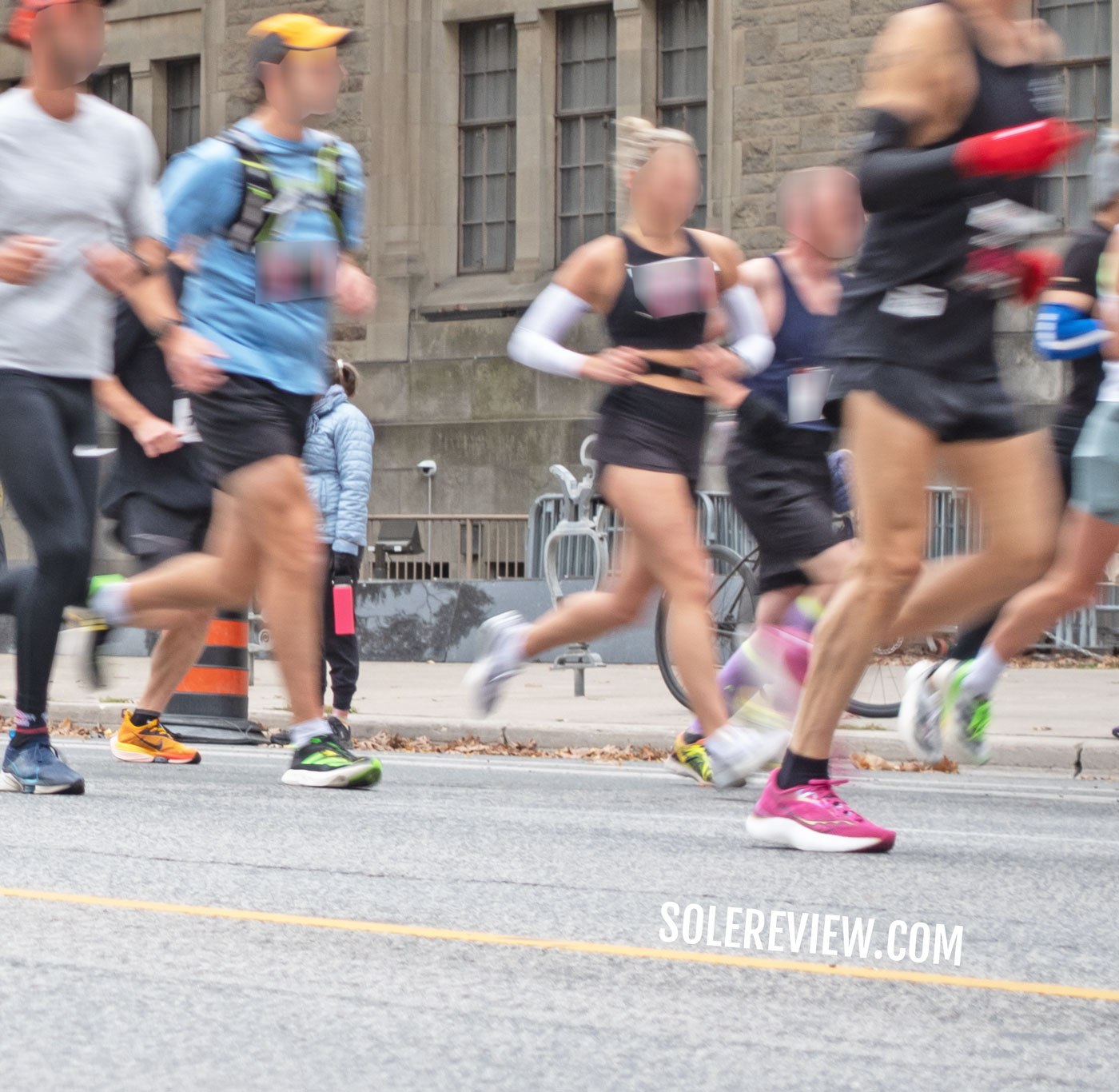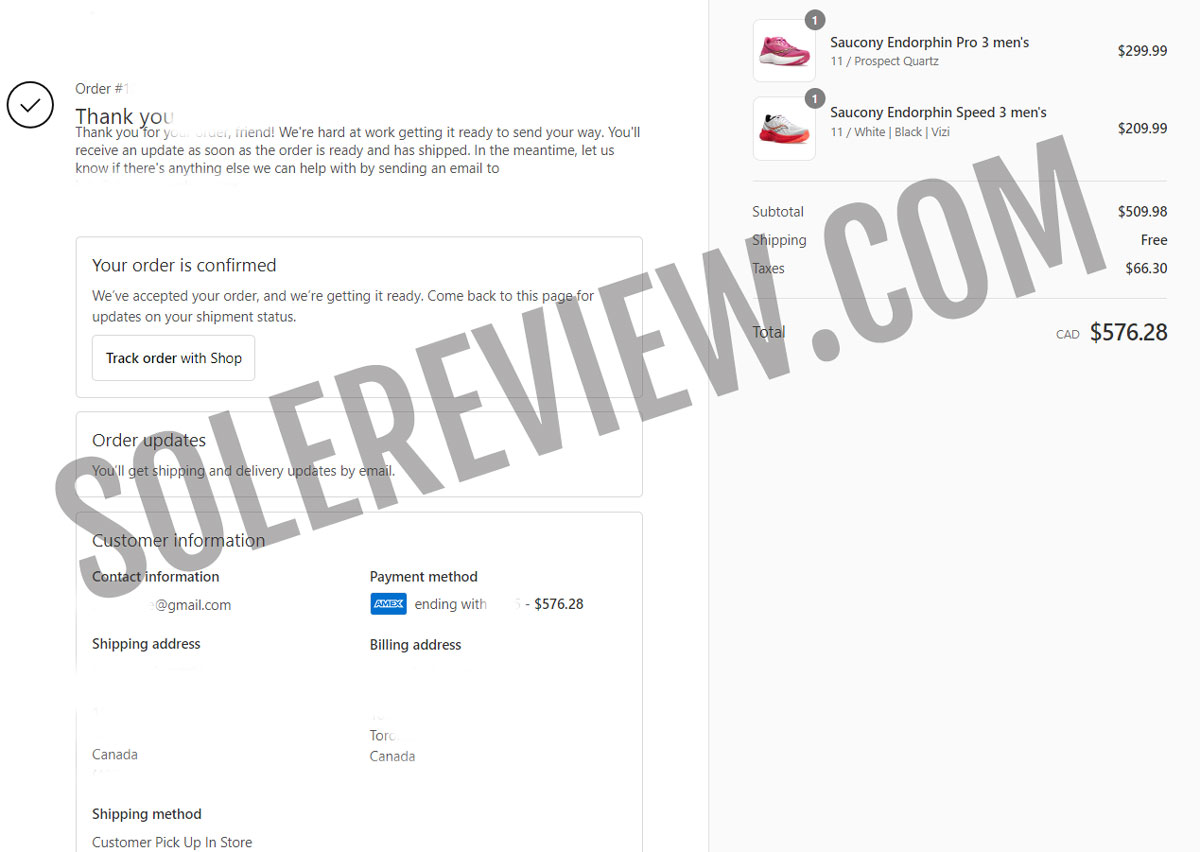
The Saucony Endorphin Pro 3 was purchased at full retail price for our review. The amount is in Canadian Dollars.
In this review:
INTRODUCTION
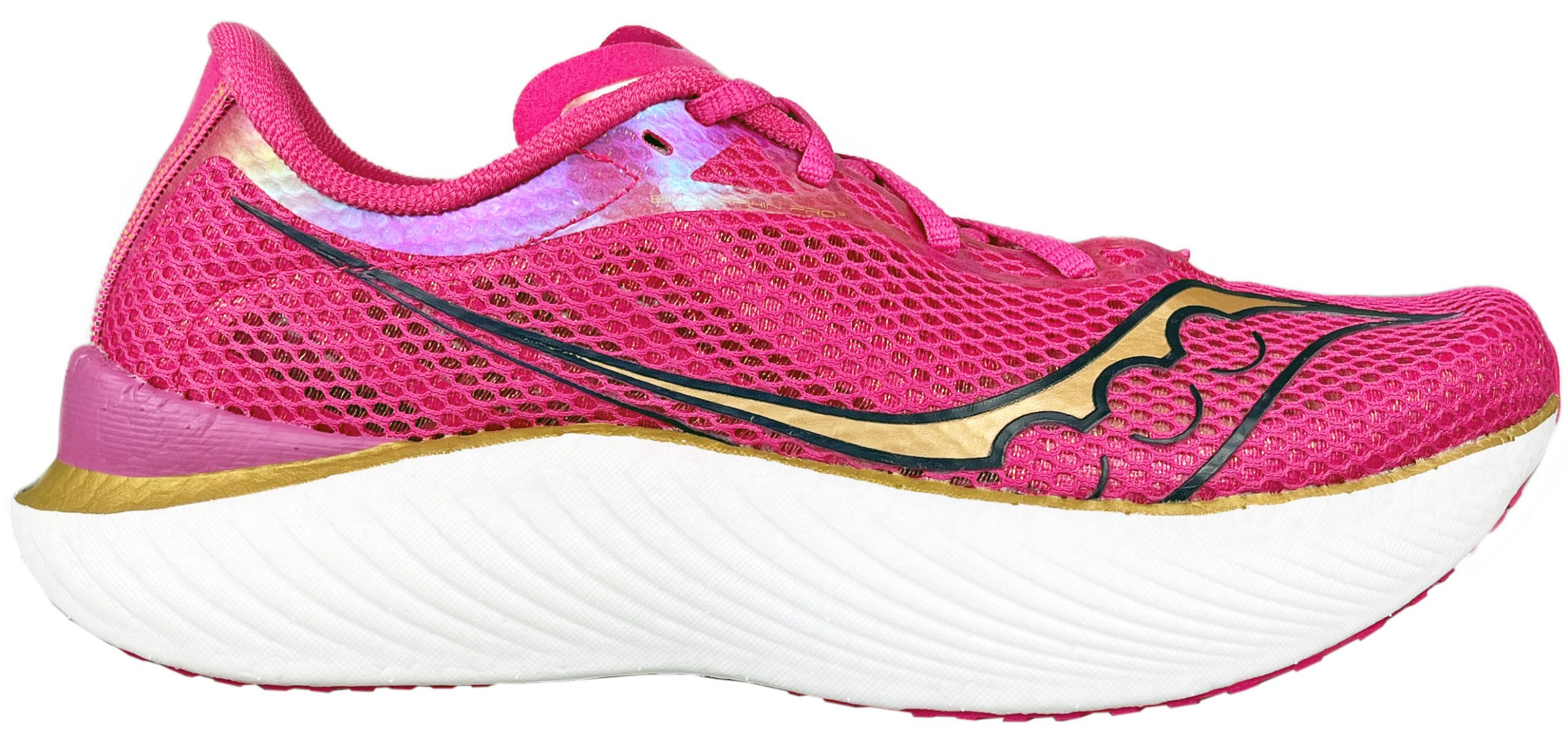
The Endorphin Pro 3 got a radical makeover for 2022. So where does that leave the Speed 3?
If there are two similar shoes from the same brand – in this case, the Endorphin Pro and Speed – we usually compare them towards the end of the review.
This time, it makes more sense to put this right at the top. For the last couple of years, we’ve always recommended the Endorphin Speed over the Pro due to its higher level of versatility and stability, and the price difference wasn’t worth it.
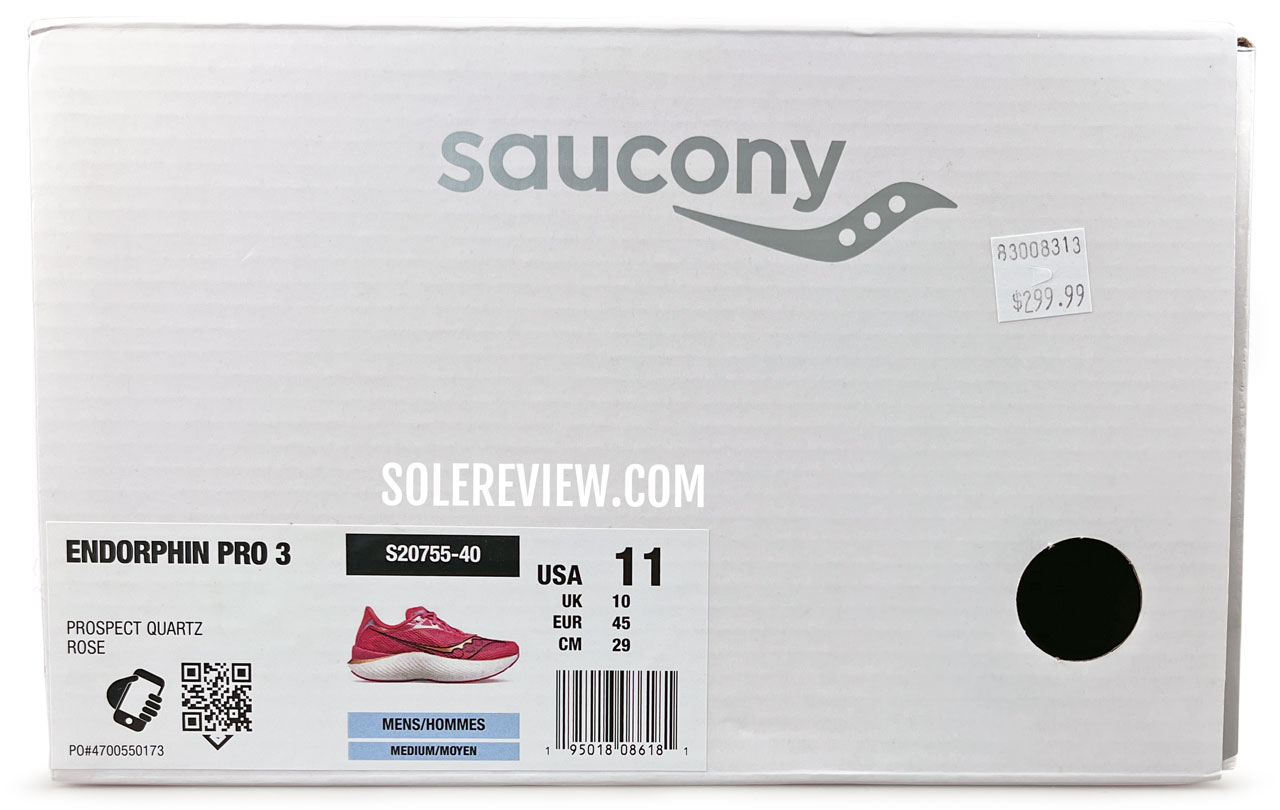
No traces of the Endorphin Pro V1 and V2 remain on the newest version.
From a performance standpoint, there was a narrow separation between the Pro 2 and Speed 2. Both were equally capable marathon racers with a similar ride quality.
After all, both the (older V1 and V2) Pro and Speed shared the same midsole except for the different strobel and plate material. Even the removable insole was identical across both models. That only made the Speed V1 and V2’s case stronger.
But things are different in 2022, are they not? Yes, so let’s take a closer look at both the Endorphins.
COMPARISON: THE SAUCONY ENDORPHIN PRO 3 VERSUS SAUCONY ENDORPHIN SPEED 3
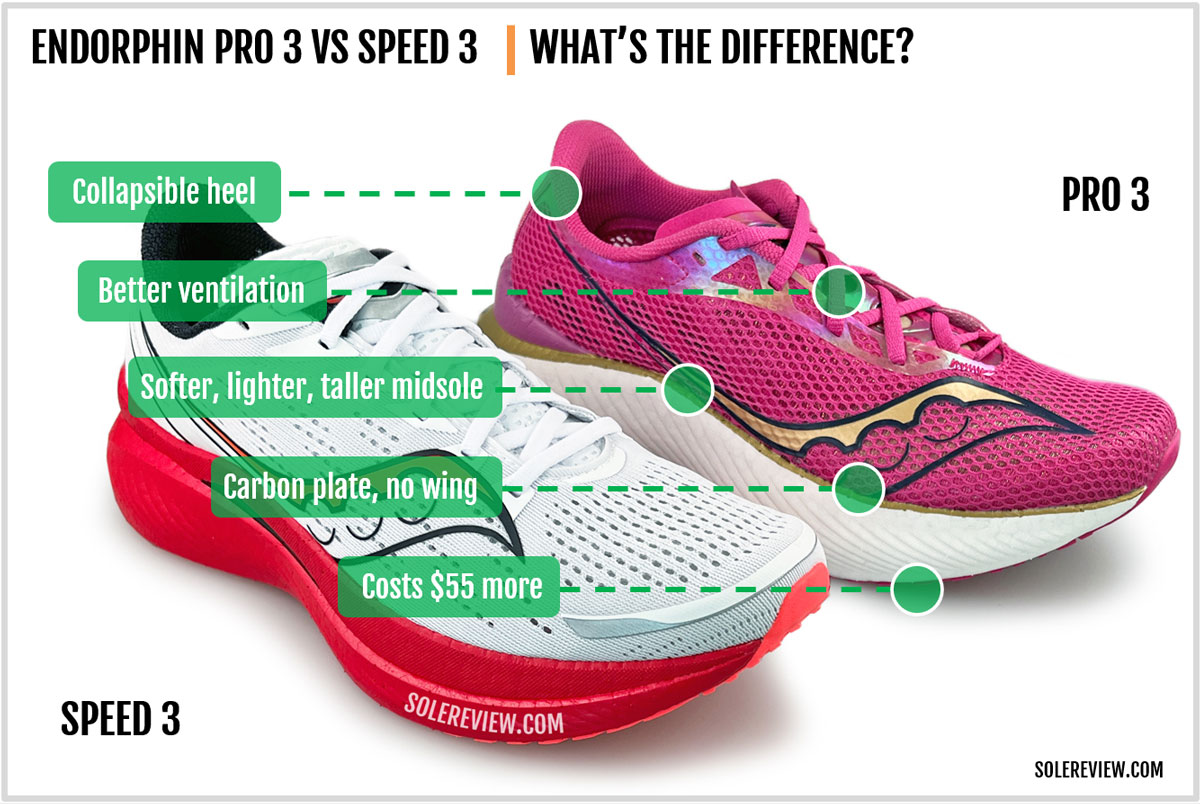
Unlike the first two versions, the Pro 3 and Speed 3 no longer share a common midsole, so the differentiation goes well beyond the plate material. (Nylon vs. Carbon). Even the outsole and insole design differ from the Speed 3.
Considering all the updates, is it worth getting the Endorphin Pro 3 over the Speed 3? A question asked in reverse would be equally relevant.
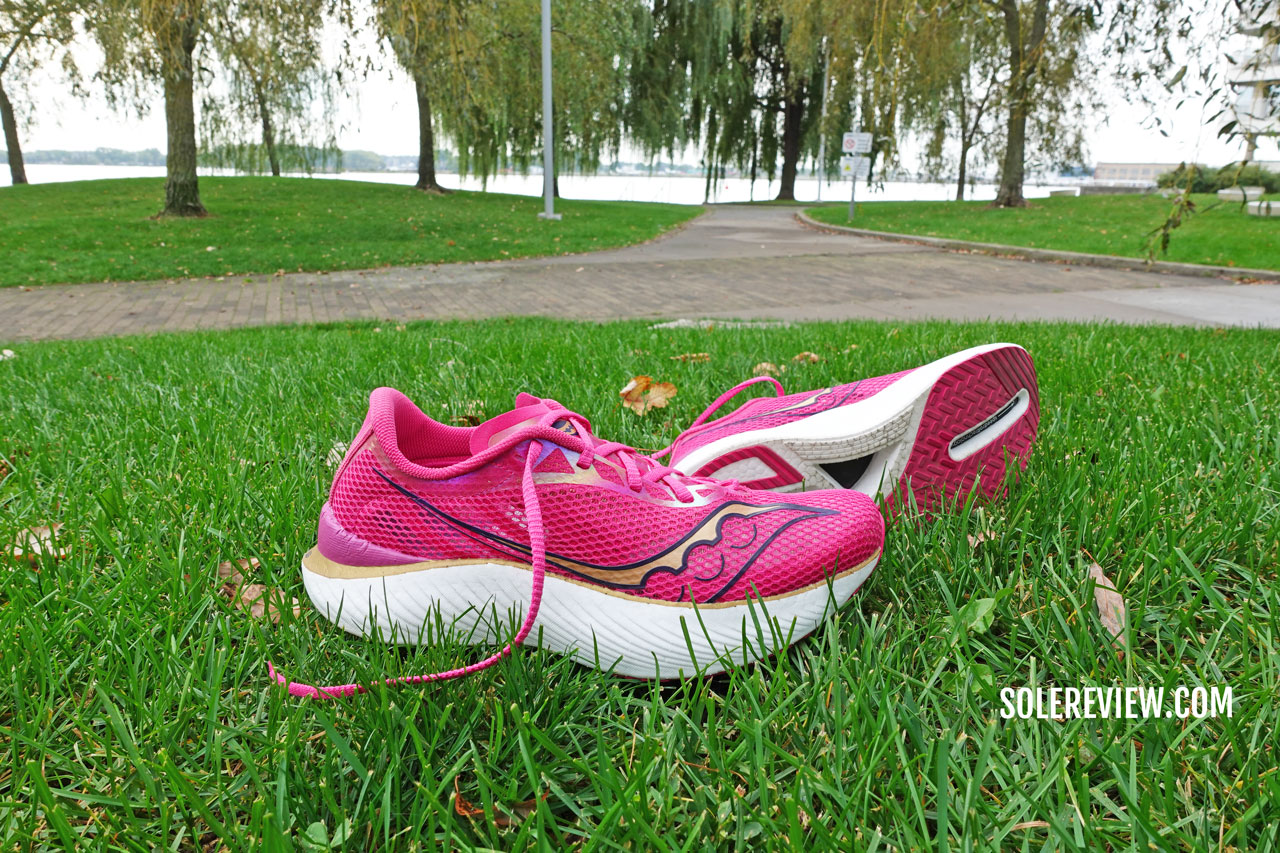
The answer is no longer as black-and-white as it once was. The Pro 3 and Speed 3 have specific areas of strengths and weaknesses, so it becomes a subjective choice.
However, if you’re looking for a short answer, here it is.
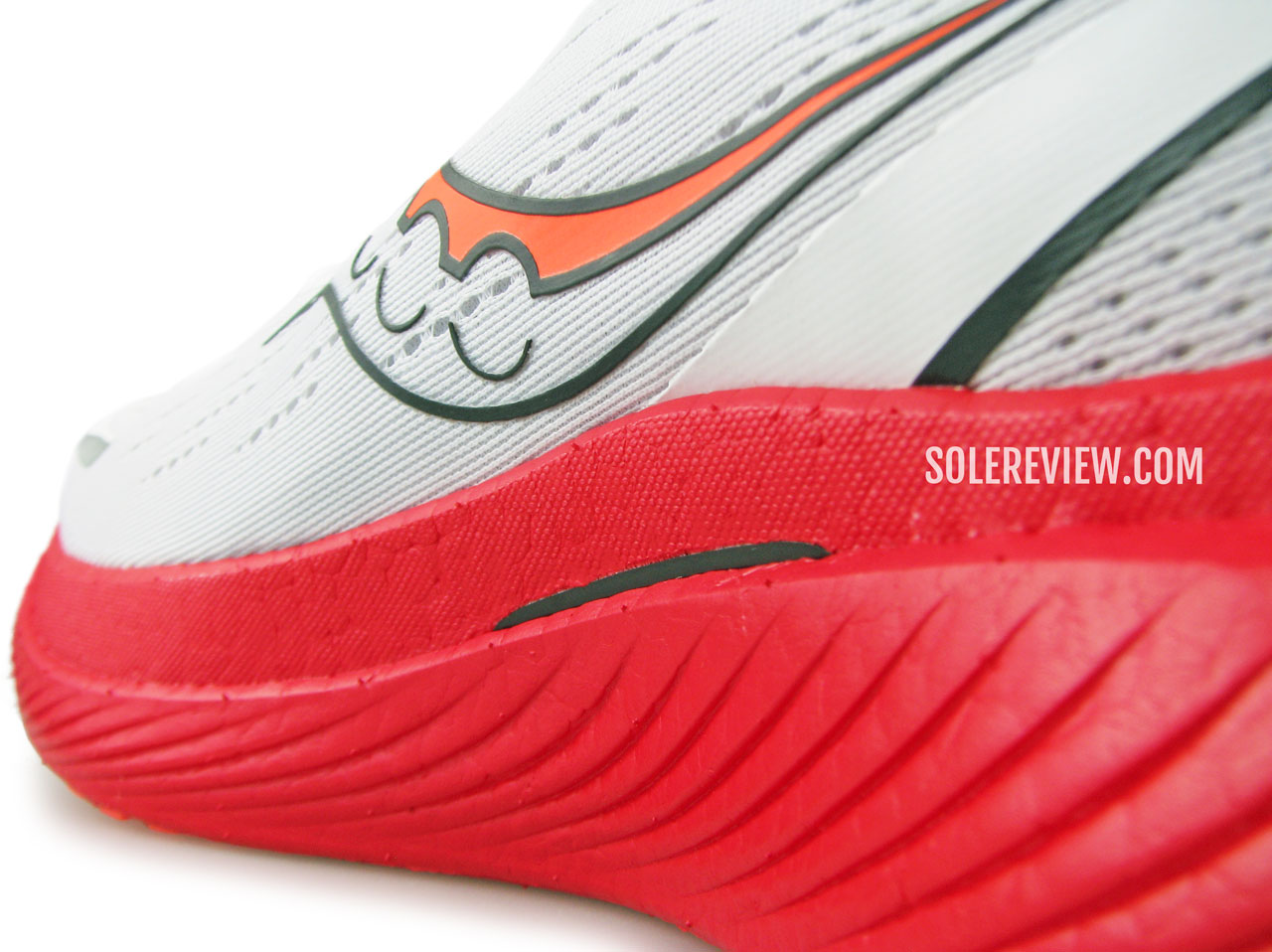
The ‘winged’ plate (seen in black) adds an element of support over the midsole. The flared sidewalls align with the insole molding for sensory arch support. When compared to the Pro 3, the Endorphin Speed 3 is more forgiving and versatile.
Given its lower stack heights and better overall stability, the Saucony Endorphin Speed 3 is more forgiving for runners who don’t necessarily make full-contact (midfoot) landings, do not have a 100% neutral gait, and/or have a higher degree of foot roll.
There’s a good reason why Saucony chose to give the Speed 3 a lower stack height, a winged Nylon plate, and a thicker Strobel fabric to make the shoe more stable than both the Speed 2 and Pro 3.
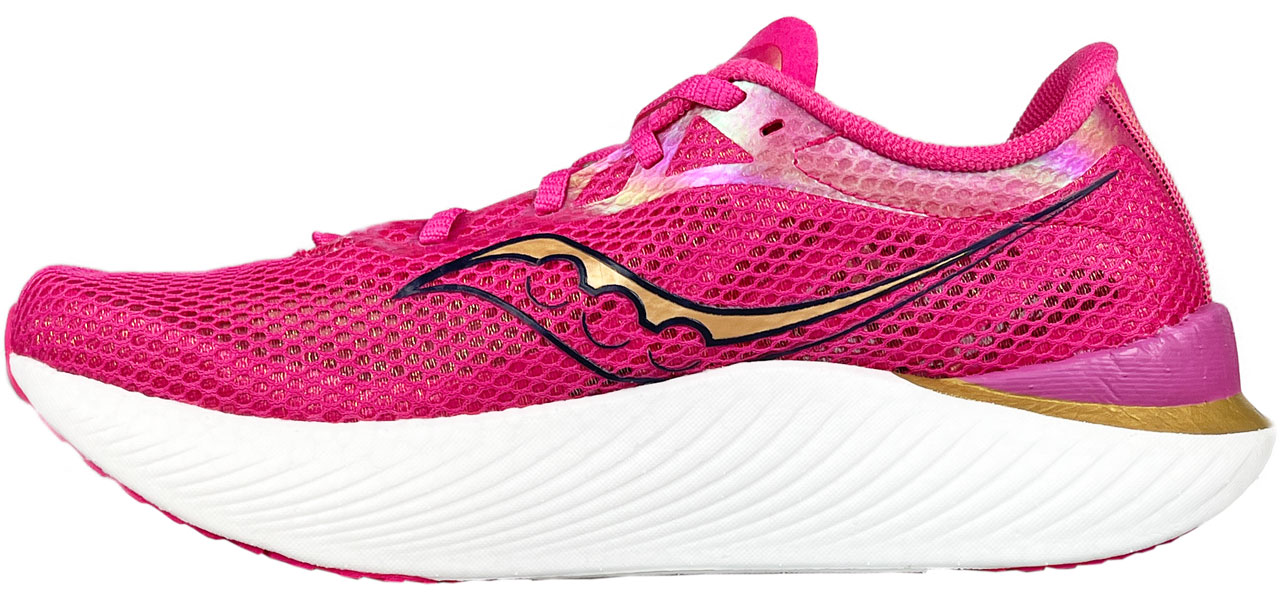
The taller, softer, and bouncier midsole rewards good form and high speeds better than the Speed 3.
On the other hand, the Endorphin Pro 3 with its softer, taller, and less stable midsole makes more sense for midfoot/forefoot strikers who can hold their form for the entire duration of the run.
For example, the foot-strike pattern could change (fore/midfoot to rearfoot) in the later stages of the race once fatigue kicks in. That’s where the Speed 3 adds value through its relatively firmer and more stable ride.
In a way, the Endorphin Pro 3 rewards good running form, as well as higher running speeds and cadence.
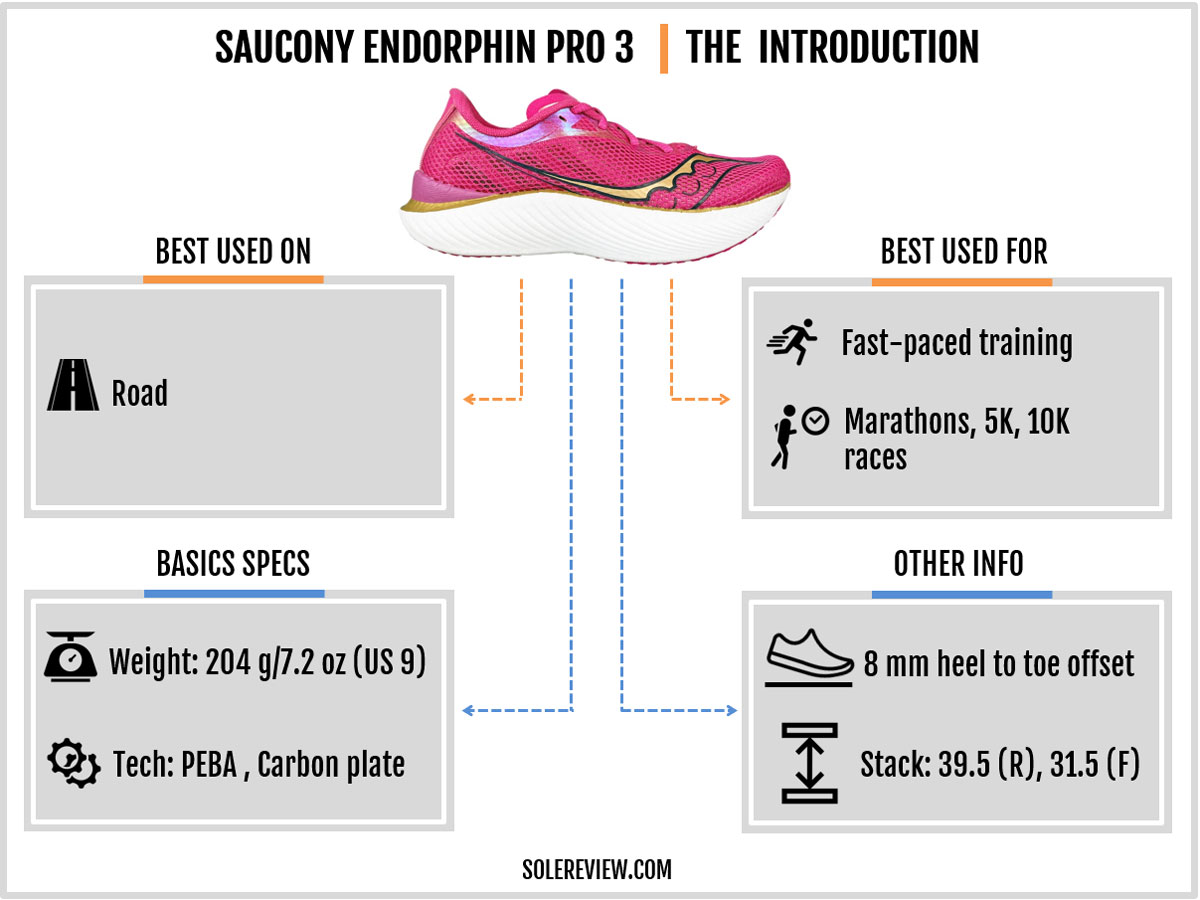
On the surface, both the shoes share a similar architecture, and therefore achieve a common performance goal. A full-length plate inside a soft PEBA foam midsole produces a comfortable ride that’s also peppy enough to build speed during race day or tempo runs.
Both are capable marathon racers that make high-mileage and high-intensity runs less punishing on the feet.
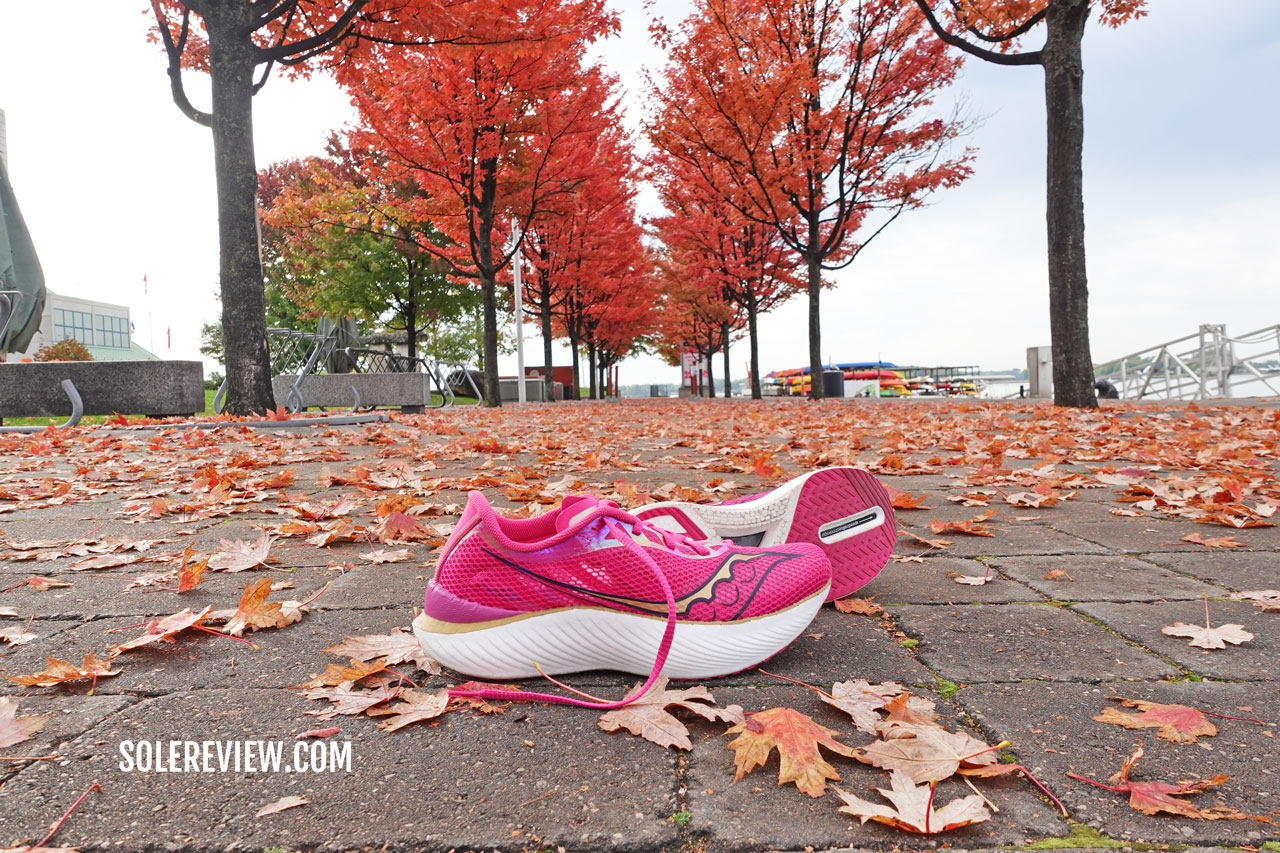
Regardless of their shared objectives, the Endorphin Pro 3 differs from the Speed in many ways.
For one, the E-Pro 3 is noticeably softer due to six factors.
The midsole is 3.5 mm taller (than the Speed 3) across its length, so there’s more of that soft and bouncy PEBA (Pwrrun PB) cushioning underneath. The second reason is the thinner Strobel under the insole that allows easier access to the tall midsole.
Thirdly, unlike the Speed 3, the Pro 3 uses a single-density midsole without the glued joint which adds some stiffness to the Speed 3. The Carbon plate lacks the ‘winged’ extension of the Speed 3’s Nylon plate, so there’s lower torsional rigidity through the midfoot.
The fifth area of difference concerns the footbed.
Rather than sharing the same insole as the Endorphin Pro 2, the Endorphin Pro 3 now has a non-removable sockliner that’s made of Pwrrun+. It’s the same expanded PU foam that makes up the Triumph 20’s midsole, except that here, it’s a thin slice of die-cut Pwrrun+.
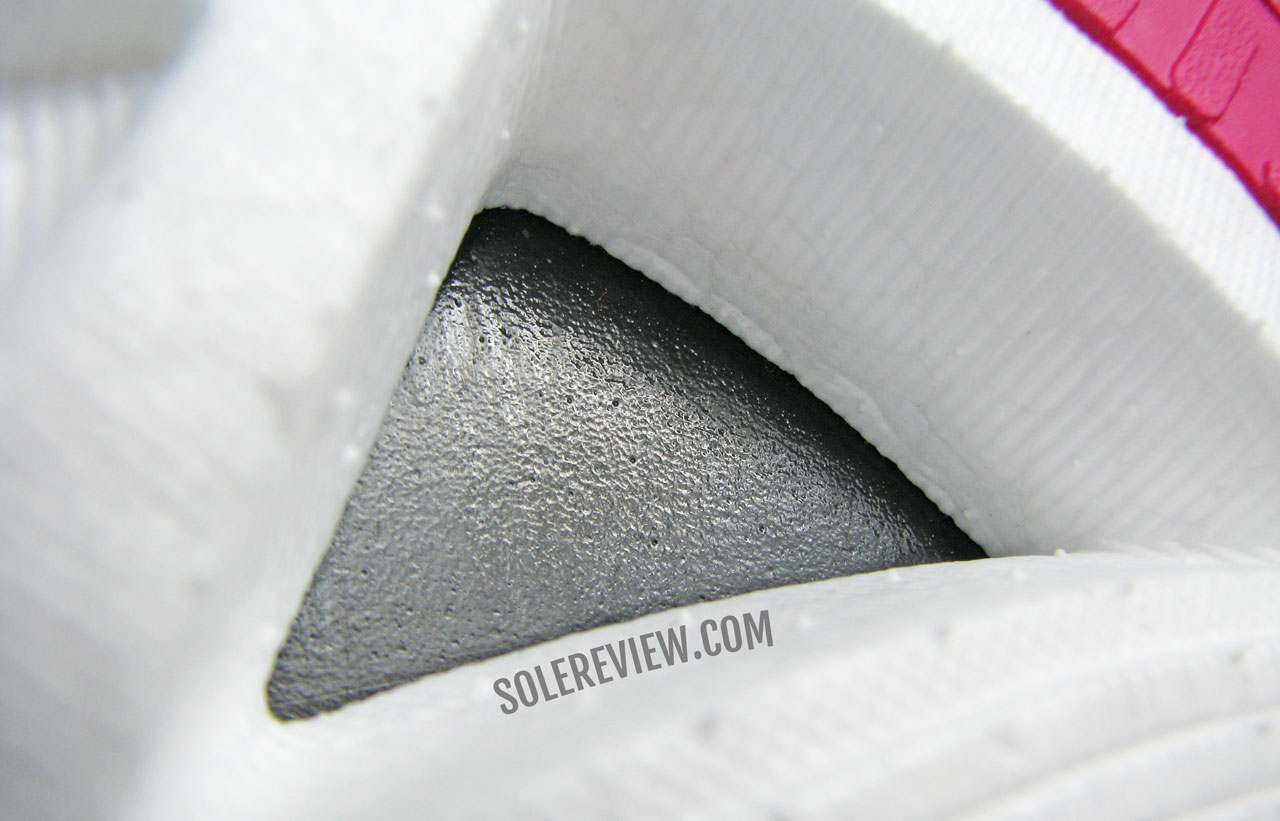
The Carbon plate is now visible through the windows under the midfoot and forefoot.
Lastly, the Saucony Endorphin Pro 3 takes inspiration from the adidas Adios Pro and exposes the Carbon plate on the outsole.
This helps the Pro 3 achieve its 7.2-ounce weight despite its much taller stack height. The cut-outs also increase the softness as the midsole becomes easier to compress.
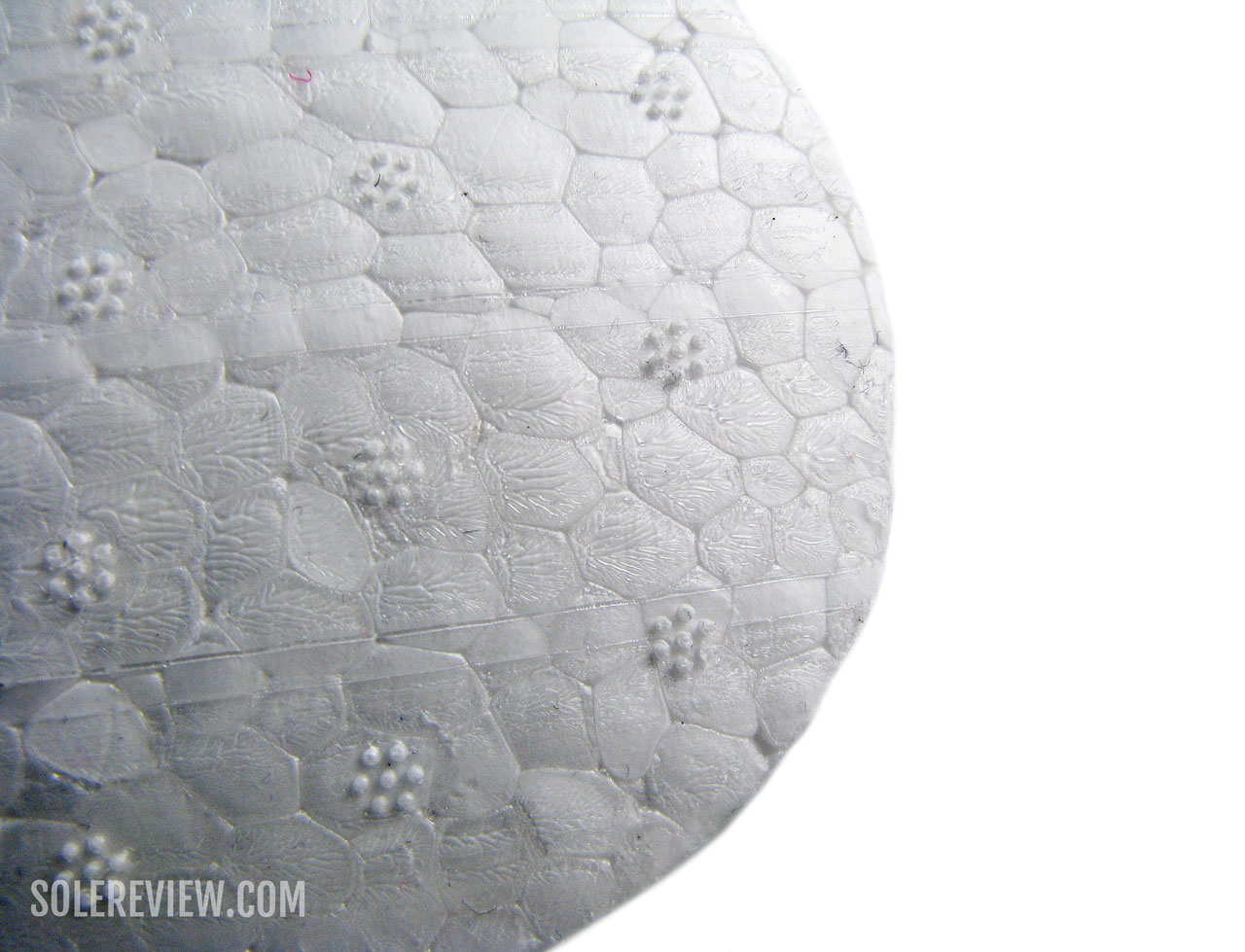
The Everun ‘topsole’ returns. The Pro 3 has a Pwrrun+ footbed; the Speed 3 has the EVA-based kind.
Unsurprisingly, the Endorphin Pro 3 offers a higher level of ride comfort during a long-distance run. It’s softer and more responsive, and the Carbon plate is more reactive during the gait cycle.
And if you thought that the Endorphin Speed 3 was breathable, the Pro 3 goes a few steps further, and then some.
THE SAUCONY ENDORPHIN PRO 3 COMPARED WITH ENDORPHIN PRO 2
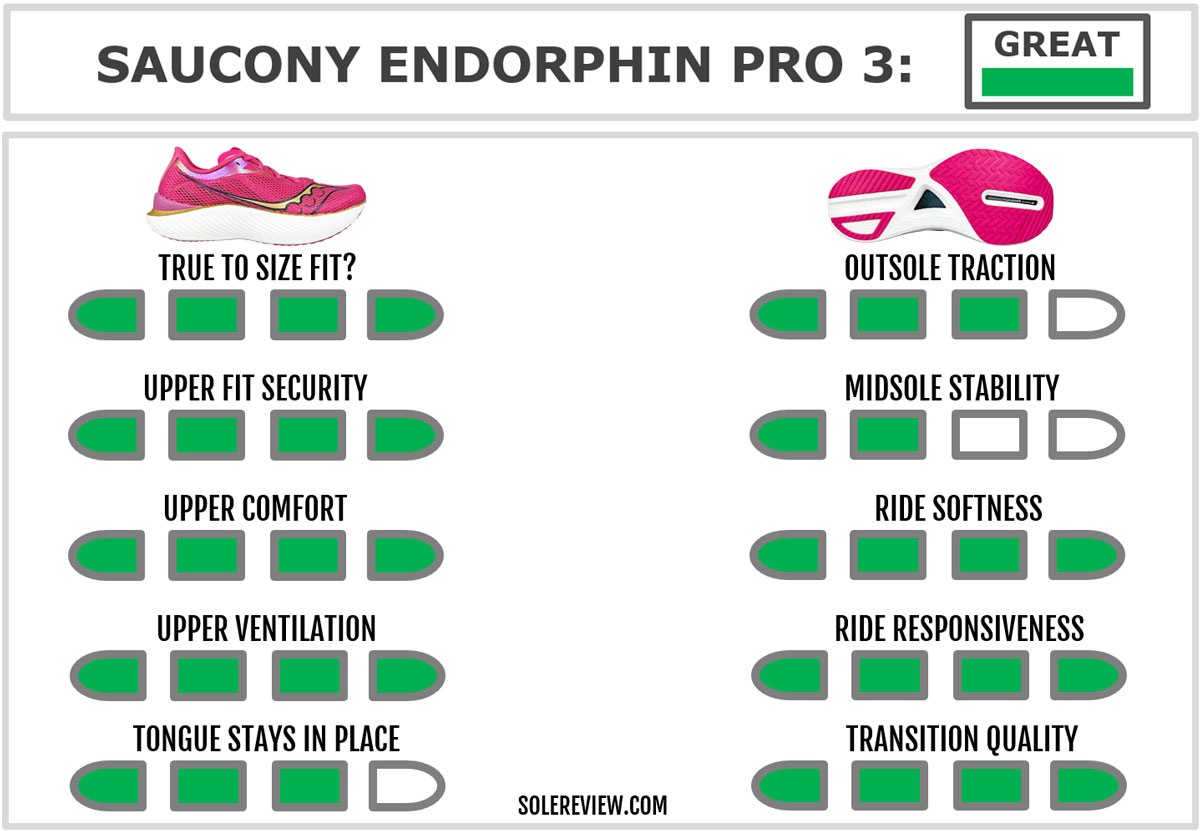
There’s some good news and bad news. The Endorphin Pro 3 is now $25 more expensive than the Pro 2. That being said, Saucony tries to justify the price through numerous performance-driven refinements.
To be specific, the midsole is 4mm taller than the V2. Naturally, the ride is softer and more comfortable.
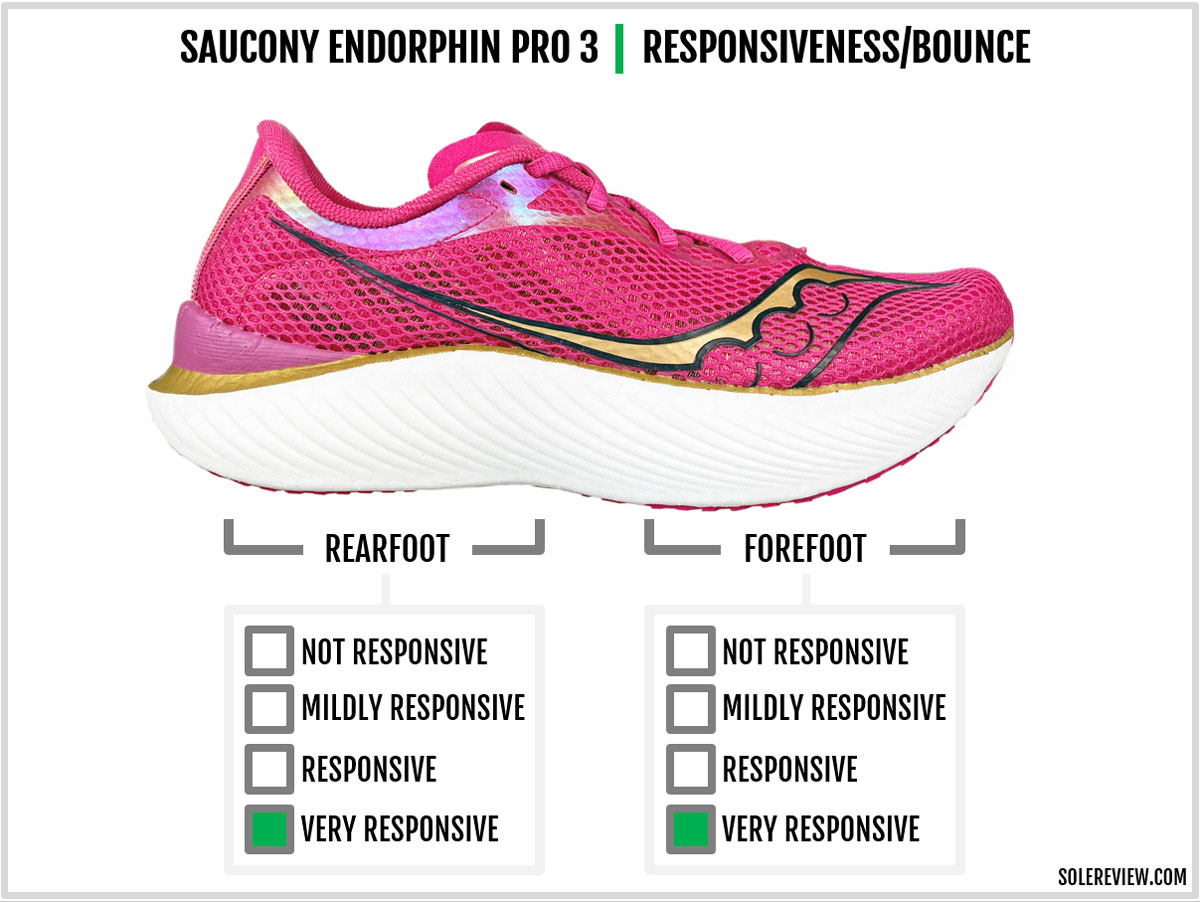
This time, we also get to see the Carbon plate through the outsole. The thicker midsole also allows the suspended end of the plate (under the heel) to better react to weight loading and foot-strike, so the Pro 3 is more responsive on the road.
One would expect the Pro 3 to have lower stability because of the taller midsole, but that’s not the case. The Pro 3 doesn’t just stop at higher stack heights. The rearfoot base is wider, the higher midfoot sidewalls cup the foot on both sides, and a deep transition groove helps center the weight.
The iridescent upper is secure and better ventilated than before, but we think Saucony went too far with the large vents on the tongue. After a long run – say 10K and farther – the tongue tends to slide forward by a few millimeters due to the lack of friction.
Our verdict? The Endorphin Pro 3 is loaded with tangible improvements over the Pro V1/V2 and is worth upgrading. The recent slew of updates makes it a worthy challenger to the Nike Vaporfly Next % 2.
THE MIDSOLE DESIGN AND RIDE EXPERIENCE
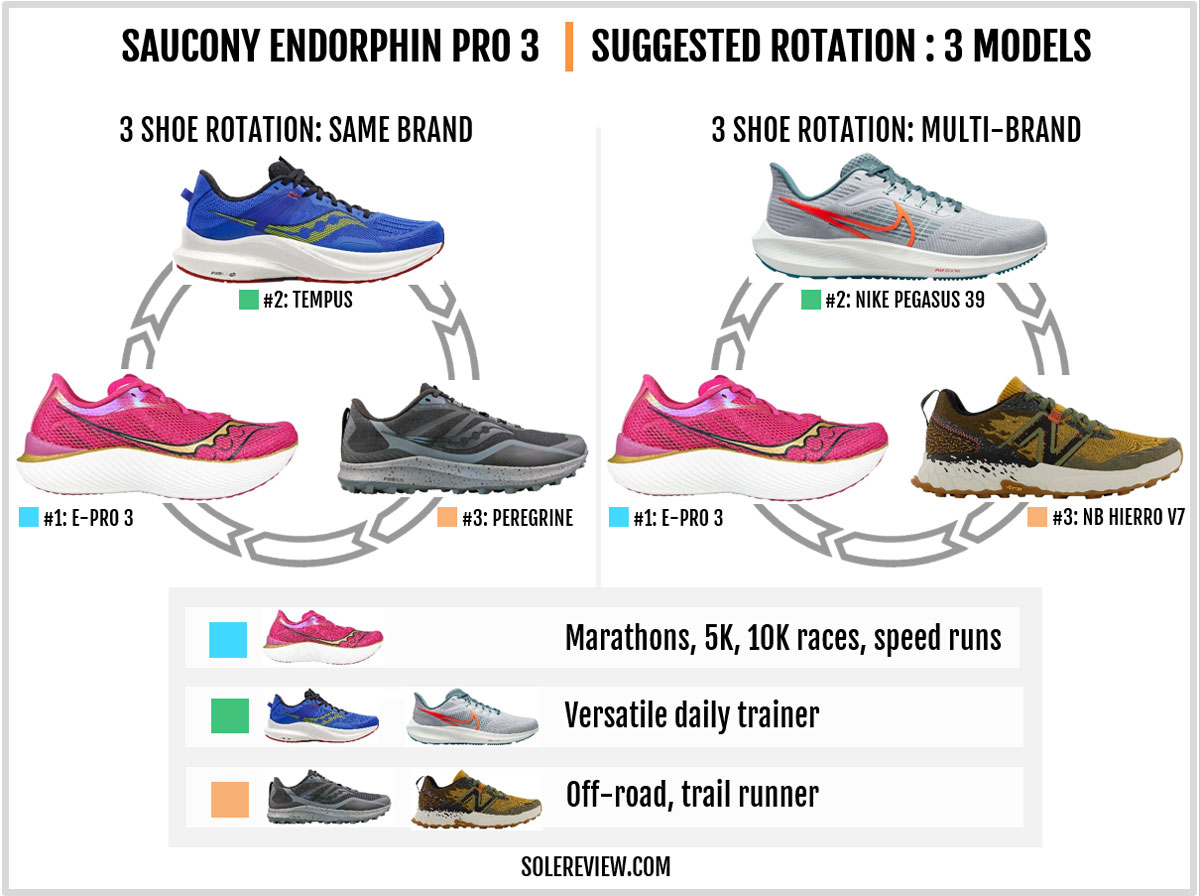
To take full advantage of what the Endorphin Pro 3 has to offer, two general guidelines need to be followed.
The first is running speed. The Carbon plate and high-volume Pwrrun PB (PEBA) midsole achieve their full potential at speeds quicker than 4:30 min/km (7:00 min/mile).
These paces usually translate into a higher cadence, so you’re not spending a lot of time loading the soft midsole.
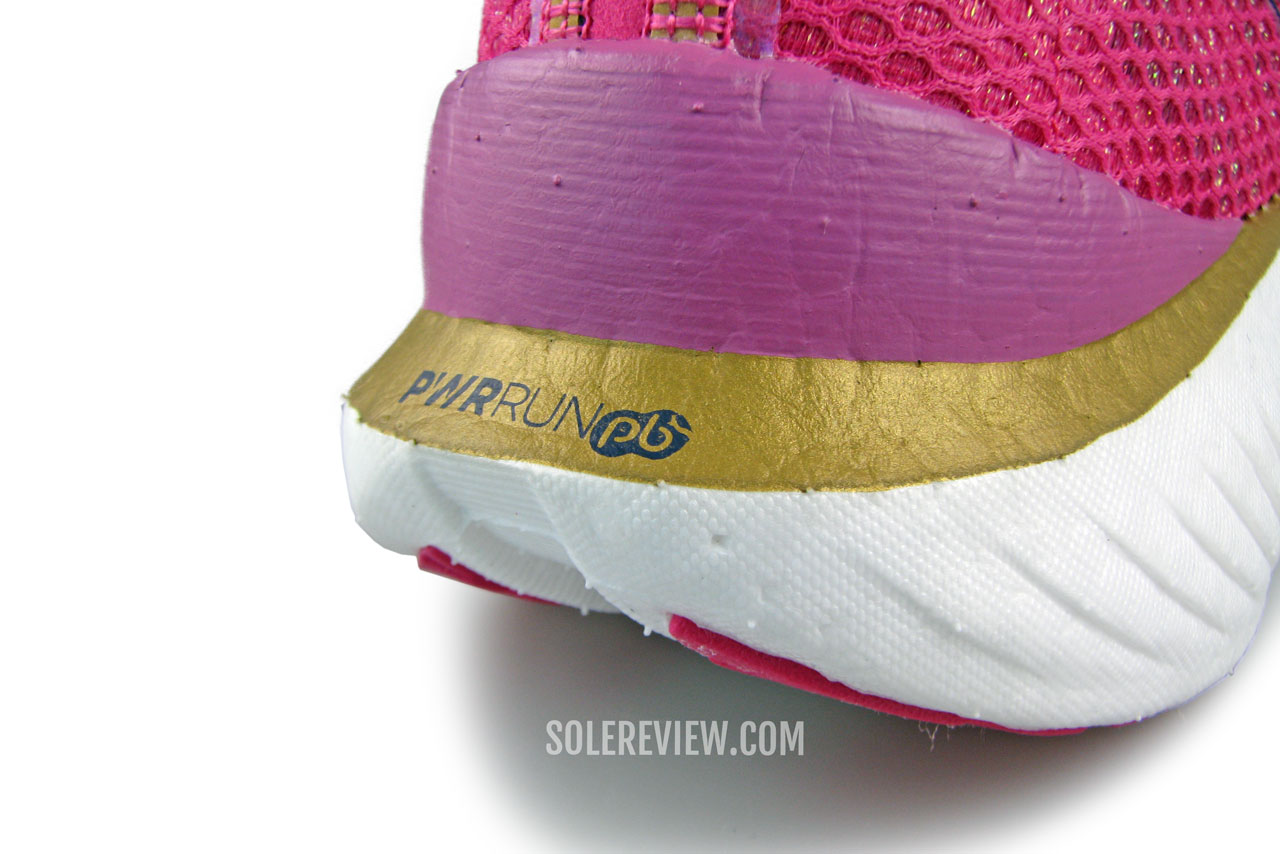
The heel has a relatively narrower footprint than the midfoot and forefoot. The heel edge is generously beveled too. This design makes the Endorphin Pro 3 good for forefoot and midfoot landings – regardless of its 8 mm heel drop.
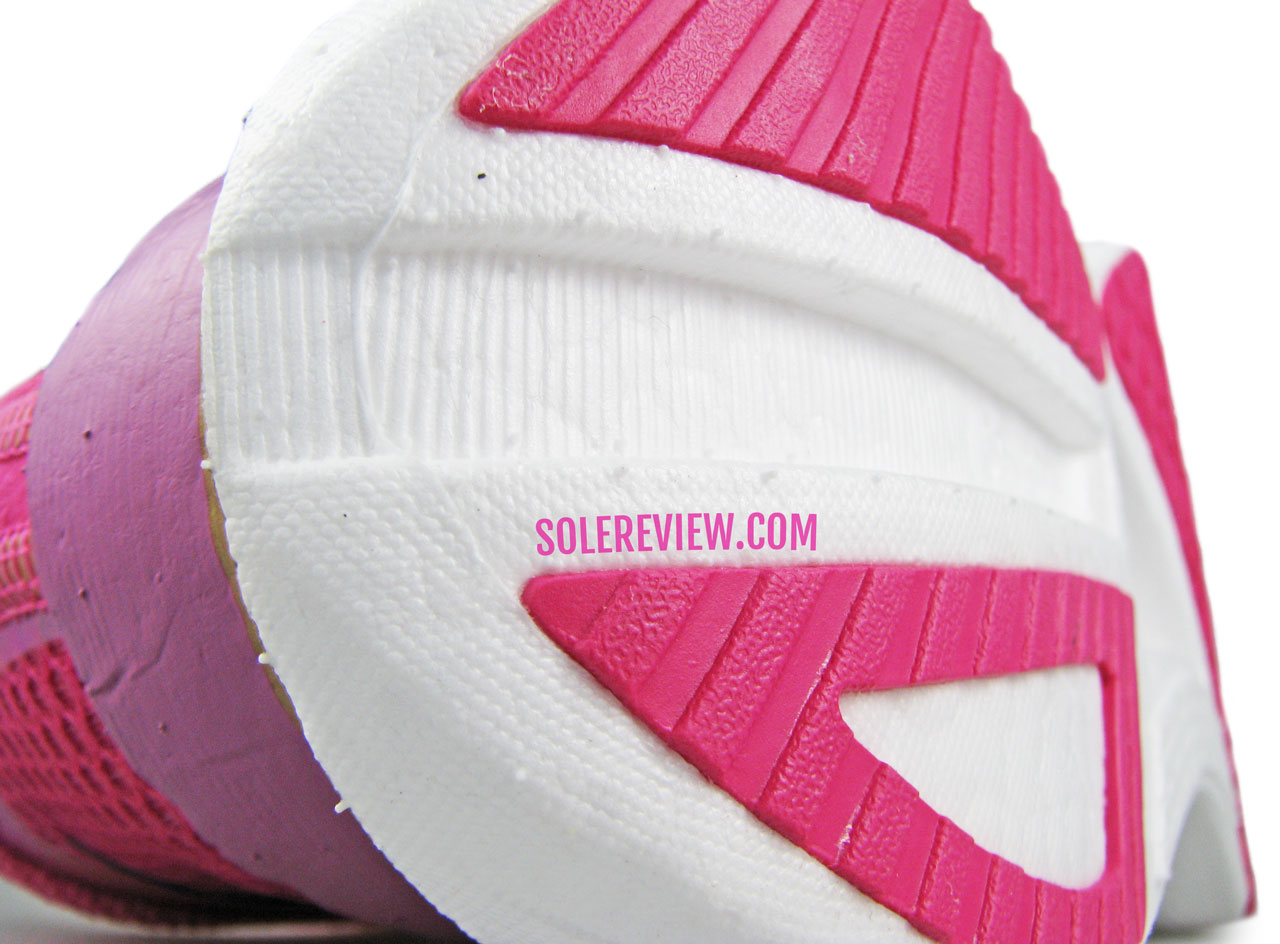
The newly-introduced transition groove adds stability to the taller midsole.
The second aspect is the foot-strike pattern. Let’s face it – certain running shoes work better for full-contact/midfoot/forefoot strikers, and the Endorphin Pro 3 is one of them.
Its 8 mm heel-to-toe offset doesn’t get in the way; the beveled heel and slimmer heel base help with smooth landings.
There’s another aspect of the Pro 3 that midfoot strikers benefit from. Despite the transition groove and wider-than-before outsole, the heel isn’t very stable. On a relative scale, the Endorphin Pro 3 makes slight gains over the Pro 2.
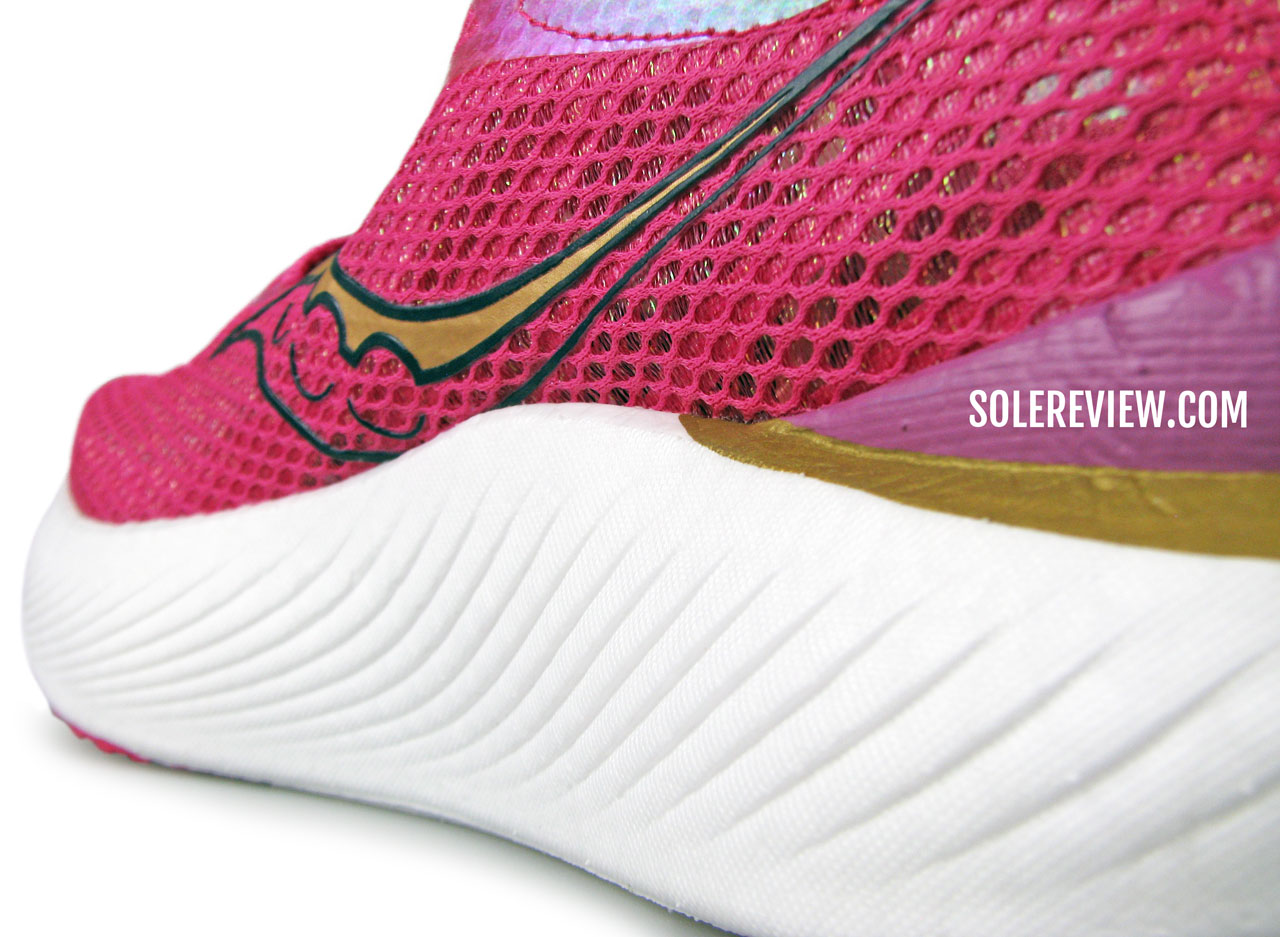
What’s new for 2022? A wider midsole under the arch. The higher sidewalls do a better job at supporting the foot than the Pro 2.
However, the midsole is the most stable between the midfoot and forefoot. Unlike the Pro 2, the new midsole has higher sidewalls that cup the foot on either side. The flared forefoot is significantly wider than the heel, and thus more stable.
So not only are forefoot and midfoot strikers landing on the most stable section of the midsole, but they also benefit from the full experience of the peppy Carbon plate.
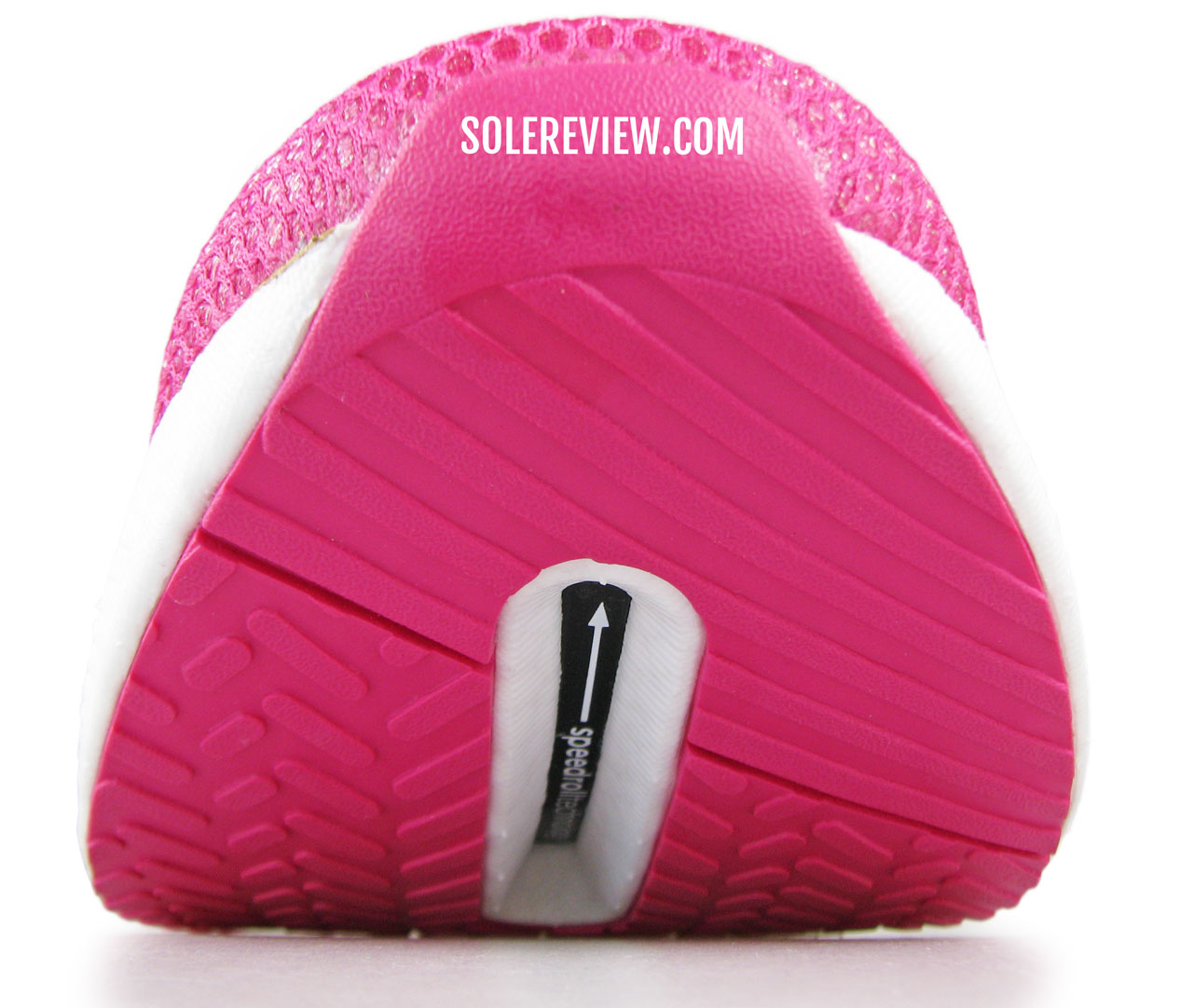
The high toe spring and rigid forefoot help the foot ‘roll forward’ during transitions.
As advertised, the lower end of the plate provides a nice forward roll, a feature that Saucony has aptly named Speedroll.
Since the Carbon plate curves higher towards the heel and rests on top of the thick midsole, it acts as a springboard. Loading the plate delivers the responsive snap that many runners are now familiar with.
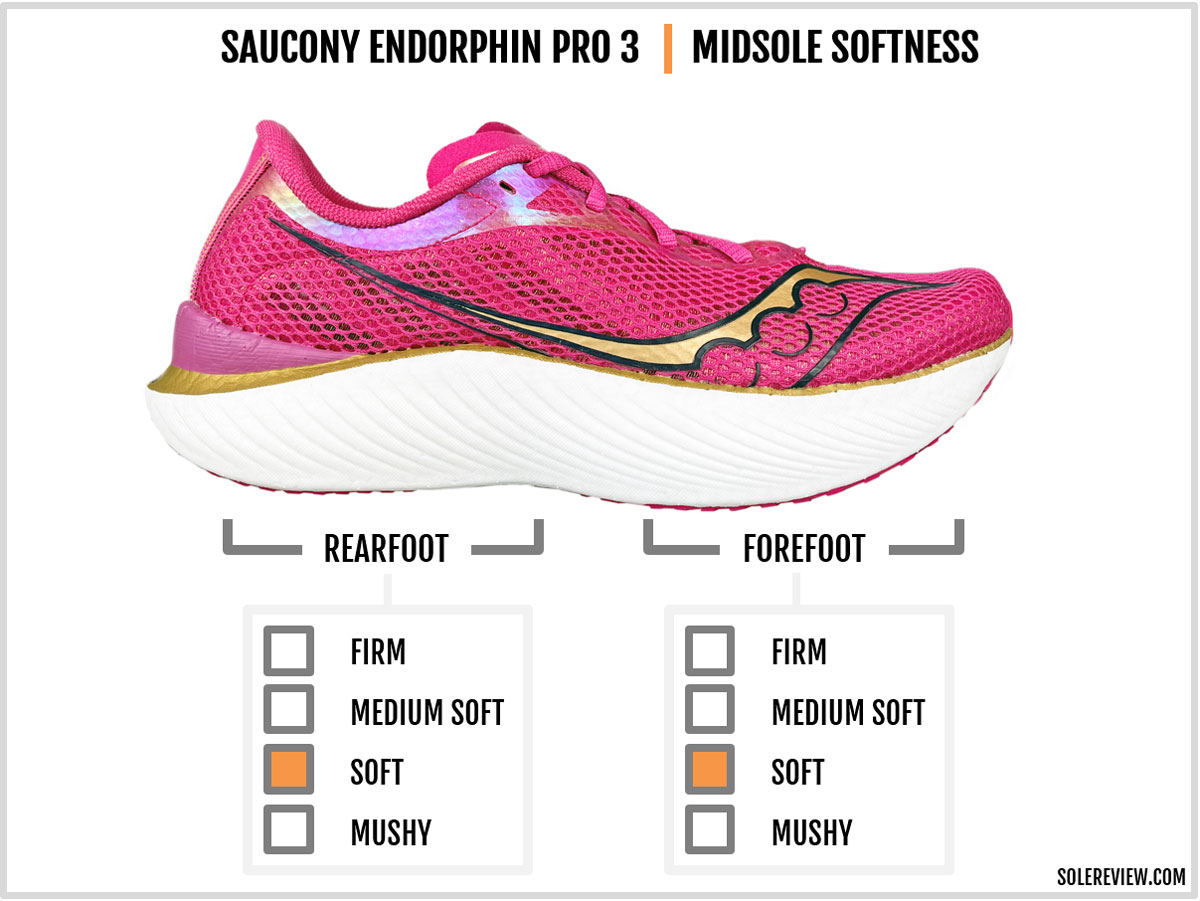
The headlining act of the Endorphin Pro 2 is its full-length PEBA foam midsole, aka Pwrrun PB.
The new midsole is much taller than before; the Endorphin Pro 3 has rear and front stack heights of 39.5 mm and 31.5 mm respectively. That’s 4 mm thicker than the previous generation, so there’s greater comfort for long runs.
The Pwrrun+ insole is new for this year. It replaces the molded EVA insole of the Pro V1 and V2, and the material isn’t the only thing that’s changed. The insole is now die-cut and flat without a molded arch flare.
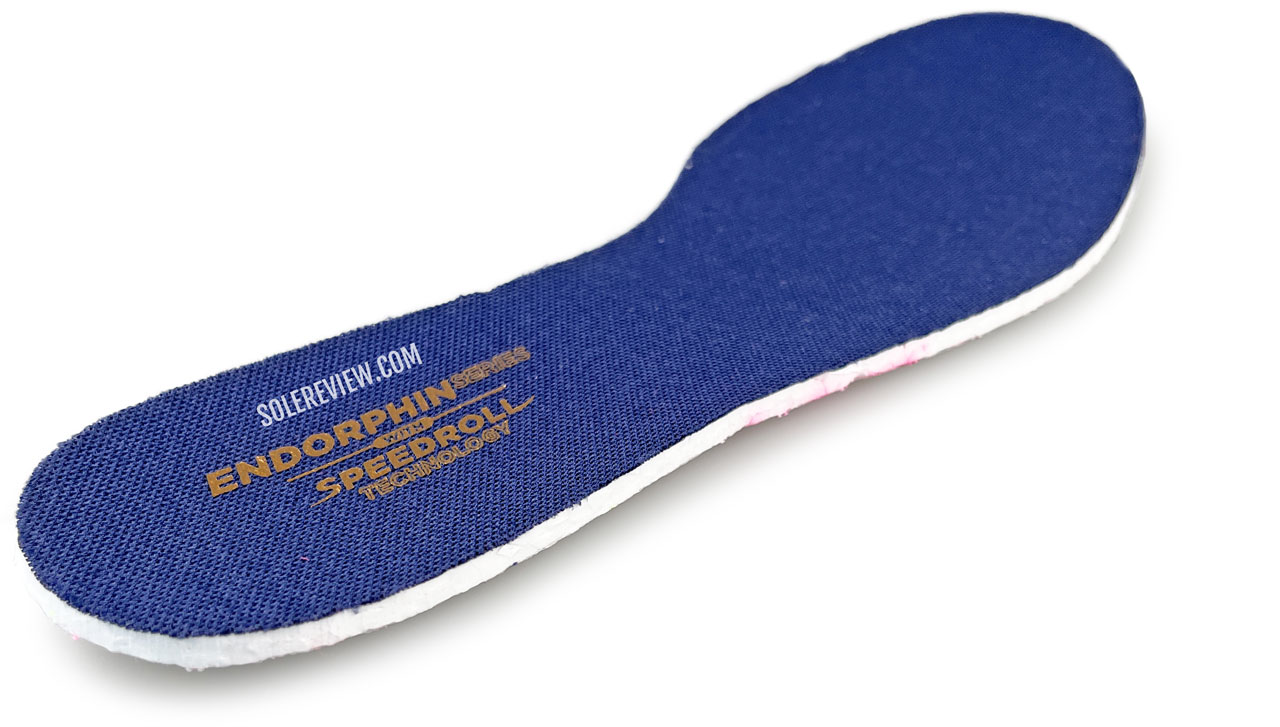
The Endorphin Pro 3 gets a die-cut footbed made of Pwrrun+.
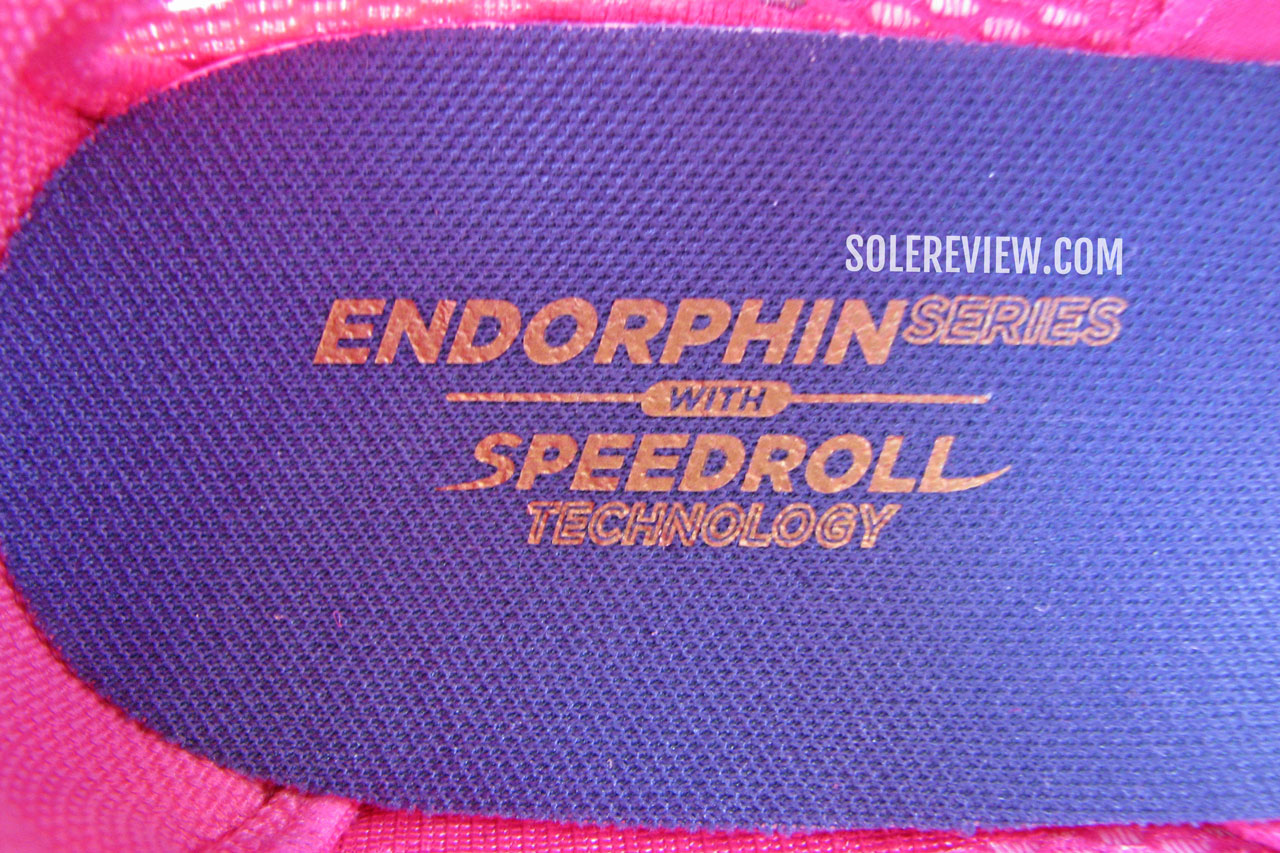
The insole is pasted to the strobel sheet, but it can be removed with minimal effort.
It’s also supposed to be non-removable, though it can be taken out of the shoe with minimal effort. If you happen to remove the insole, just make sure to properly line it up with the upper edges. Otherwise, the gap is felt during a run.
It’s interesting to note that the curve that formerly existed on the EVA footbed has been ‘transferred’ to the midsole sidewall. This approach yields better results for ride support.
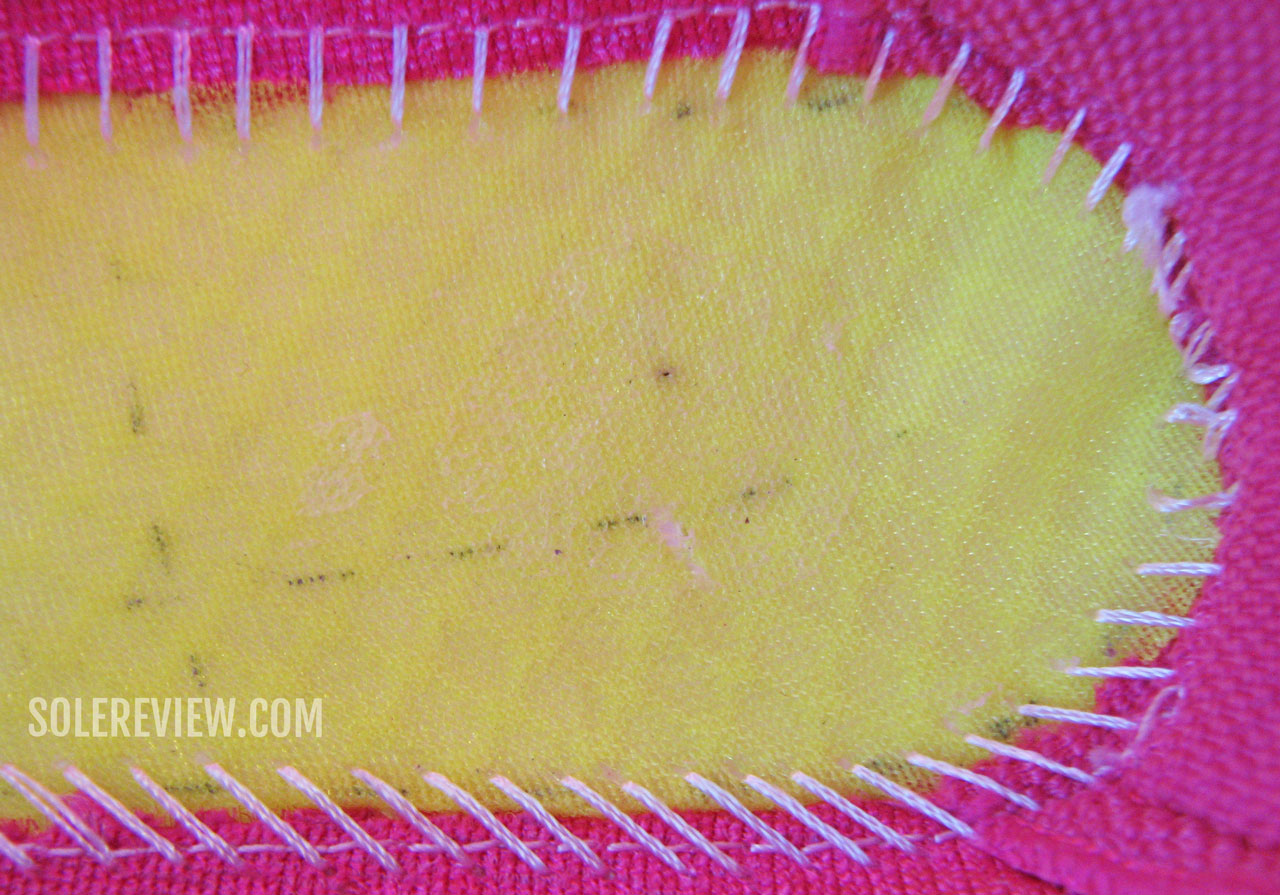
The ultra-thin strobel lasting increases the softness by allowing the foot to sink deeper into the foam core.
Like the last model, the Pro 3 uses a thin lasting fabric under the footbed. This gives the foot near-direct access to the soft foam core, and therefore elicits a stronger response from the Carbon plate.
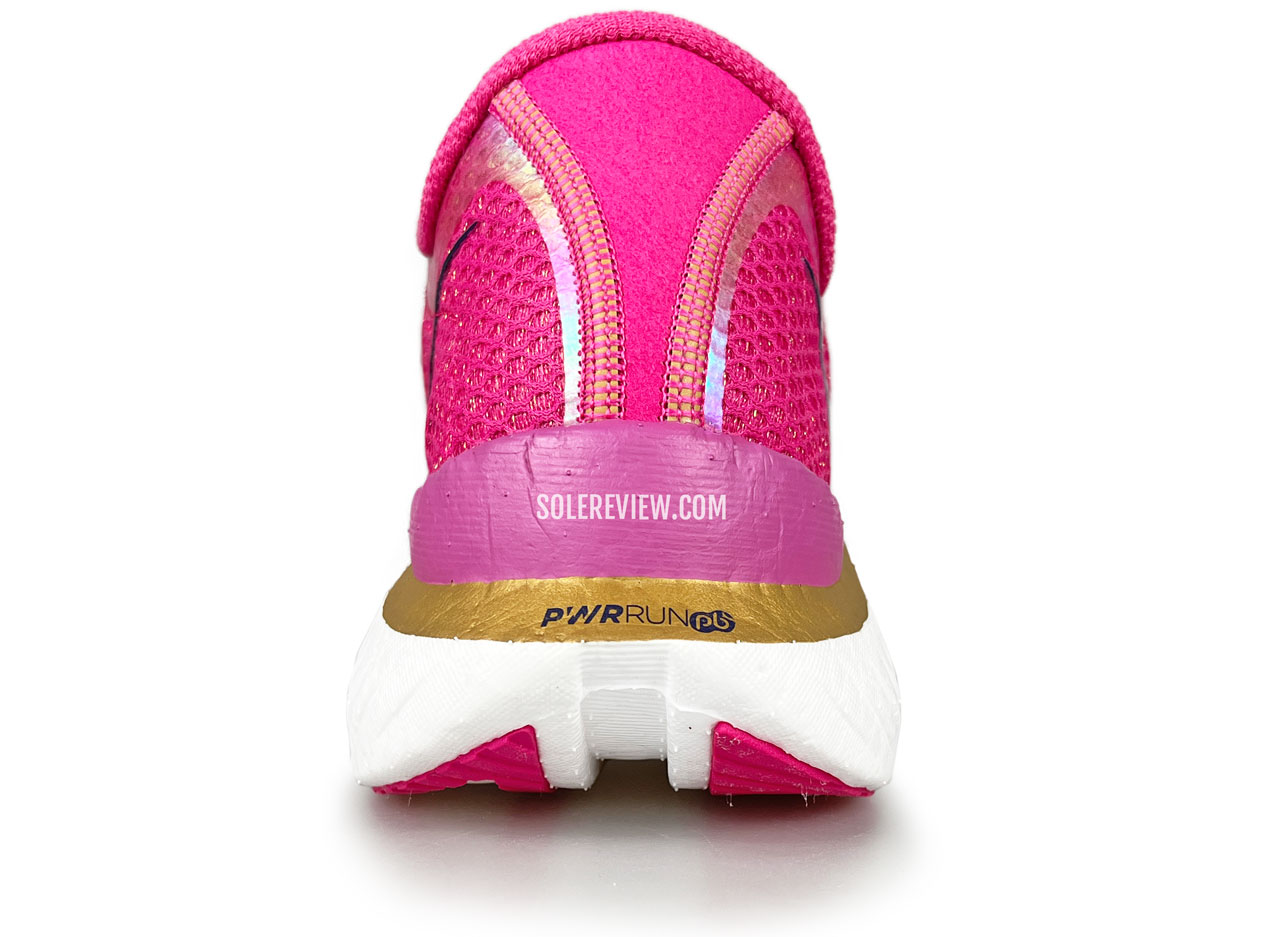
While the rearfoot stability has improved over the Pro V2, it’s still fairly unsupported.
Given the design context, there is a correlation between running speed and responsiveness. The faster you go, the quicker the plate responds – both in the rear and under the forefoot.
A higher cadence also makes the low heel stability a non-issue, as the foot isn’t spending a lot of time on the soft midsole. We’ll repeat what we said earlier in this review – the Saucony Endorphin Pro 3 displays its best behavior above 4:30 min/km (7:00 min/mile) pace and when midfoot/forefoot striking.
The heel isn’t very supportive when rearfoot-striking at slower speeds. The midsole isn’t cupping the heel like how the midfoot does, and the deconstructed upper doesn’t help either. There’s no internal heel counter supporting the foot as the Speed 3 does.
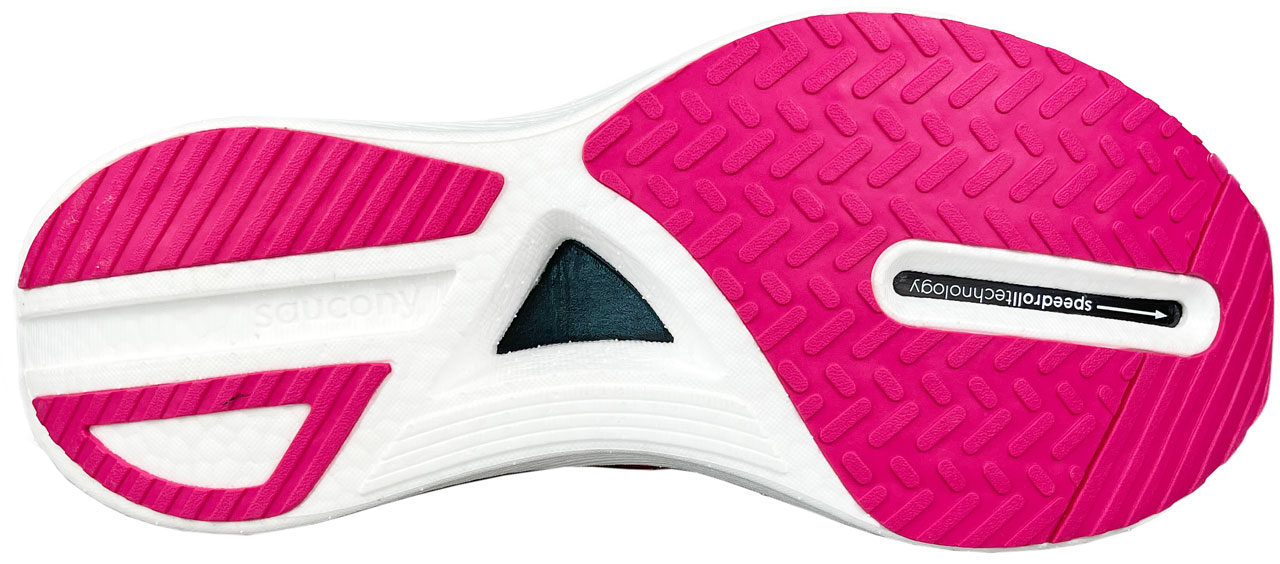
The Endorphin Pro 3 has windows exposing the Carbon plate, whereas the Speed 3 doesn’t. The new outsole grips better than the Pro 1 and 2.
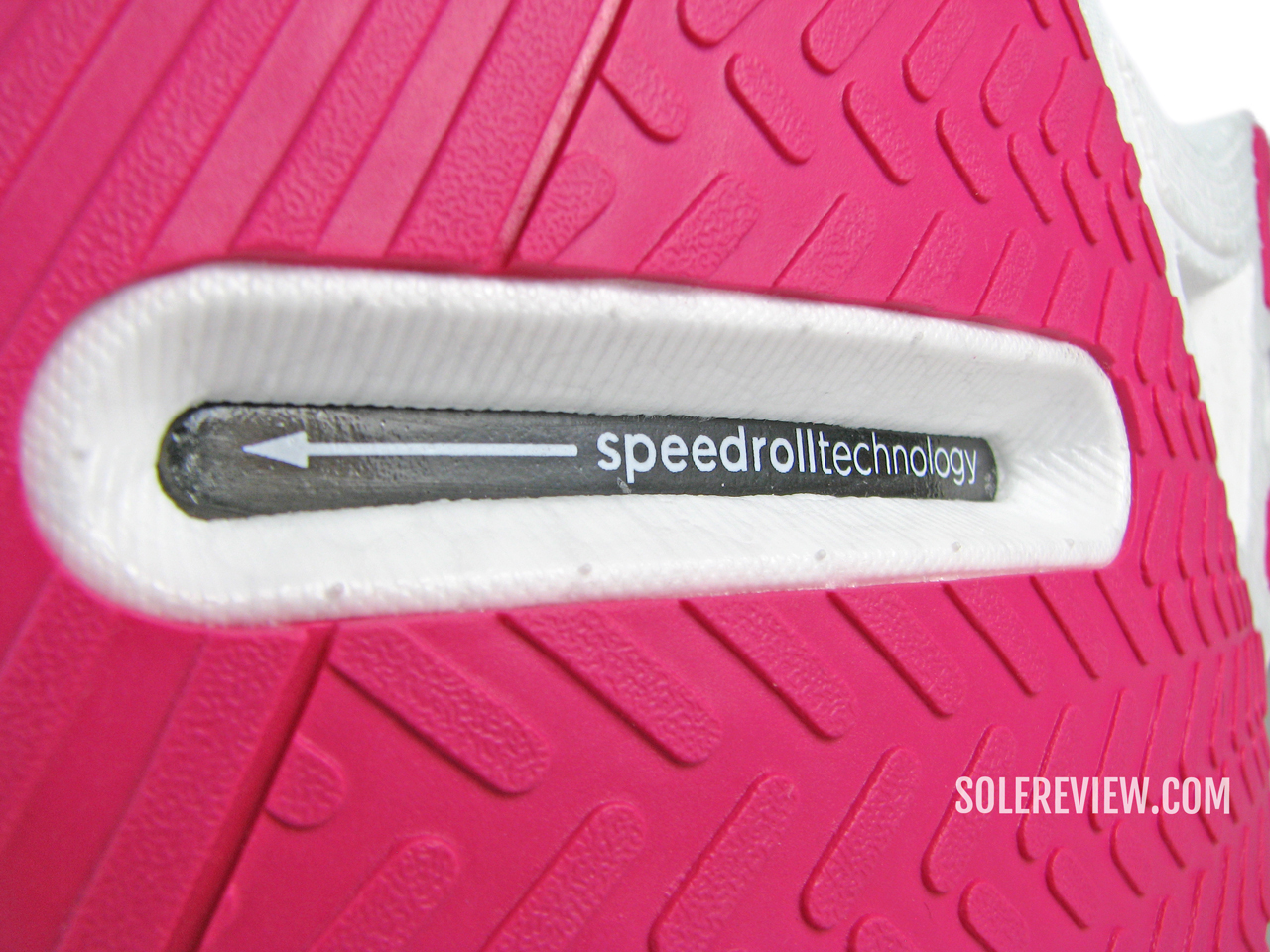
The forefoot window is nice, but we’d rather prefer outsole rubber coverage instead.
The change in the outsole geometry improves the grip quality. The older design had poor traction on wet roads, so the Pro 3’s soft rubber lugs are an improvement.
That being said, the ‘Speedroll’ window eats into the precious forefoot real estate. The less-expensive Speed 3 lacks these windows, so it has a slight edge over the Pro in outsole traction.
The midfoot window showing the Carbon plate also shortens the transition groove as compared to the Speed 3. It’s hard to see this as anything other than form over function.
RECOMMENDED ROTATION

The rotational recommendation is similar to that of the Endorphin Speed 3, but we’ll also throw in the Tempus here as a daily trainer option. Of course, shoes like the Saucony Ride 15 and Nike Pegasus 39 are versatile neutral shoes for everyday training, regardless of the distance.
However, if you’re looking for a softer Saucony that can be a potential everyday shoe, the Tempus is worth considering. Regardless of its ‘stability’ positioning, the ride quality is neutral – and you get the soft Pwrrun PB cushioning as well.
For the occasional off-road runs, the Saucony Peregrine 12 or New Balance Hierro V7 works well. The firmer Peregrine 12 is more trail-focused, whereas the softer Hierro is a good trail-road hybrid.
IS THE SAUCONY ENDORPHIN PRO 3 DURABLE?
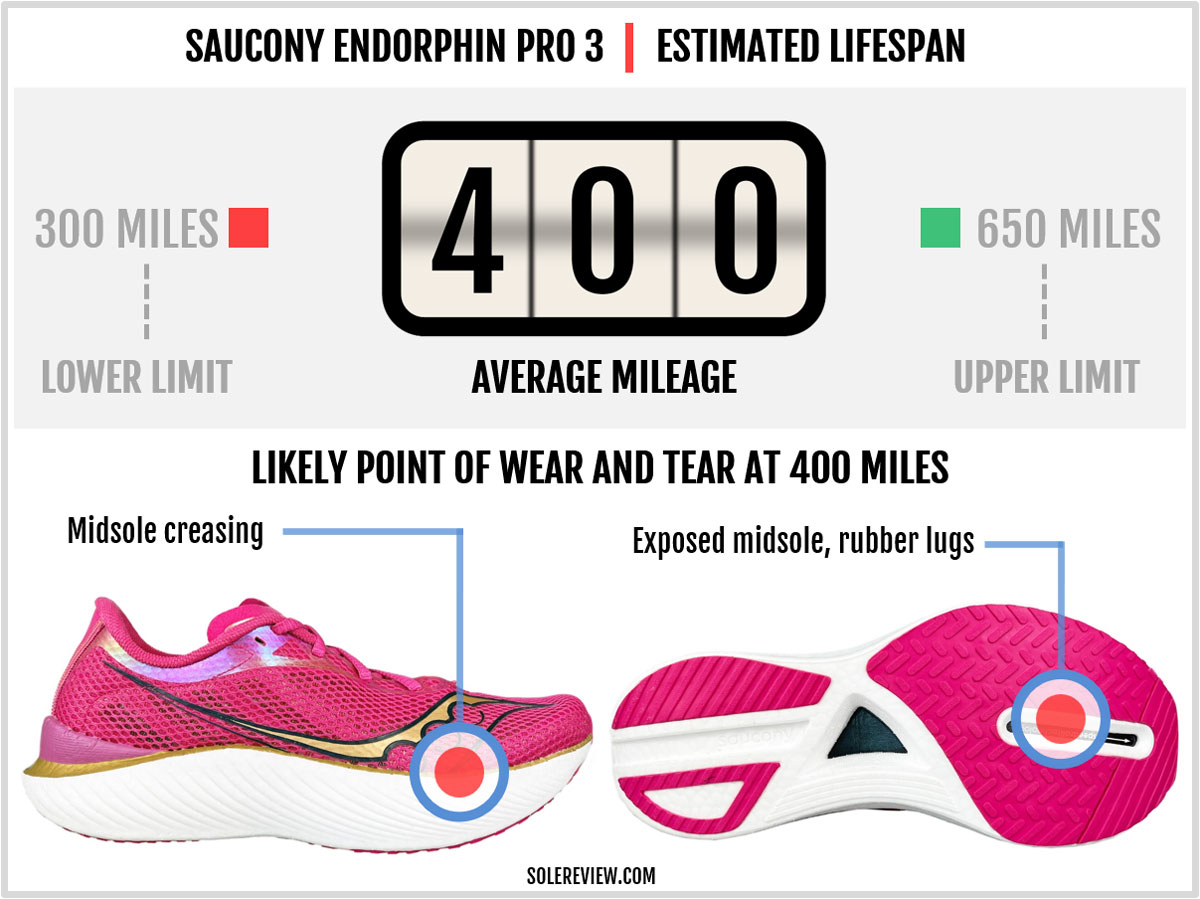
Our Endorphin Pro 3 is 40 miles in, and so far, it looks ok from a durability perspective. Though the mesh looks thin, it’s reinforced with a synthetic underlay near the midsole edge.
Though the outsole rubber is thinner than the Pro 2, it’s softer than before. This allows it to flex inwards instead of taking hard direct knocks from the landings and transitions. This kind of behavior usually does a better job of delaying the rate of abrasion.
All in all, we estimate that the Saucony Endorphin Pro 3 should last 400 miles without a drop-off in performance.
THE UPPER DESIGN AND FIT
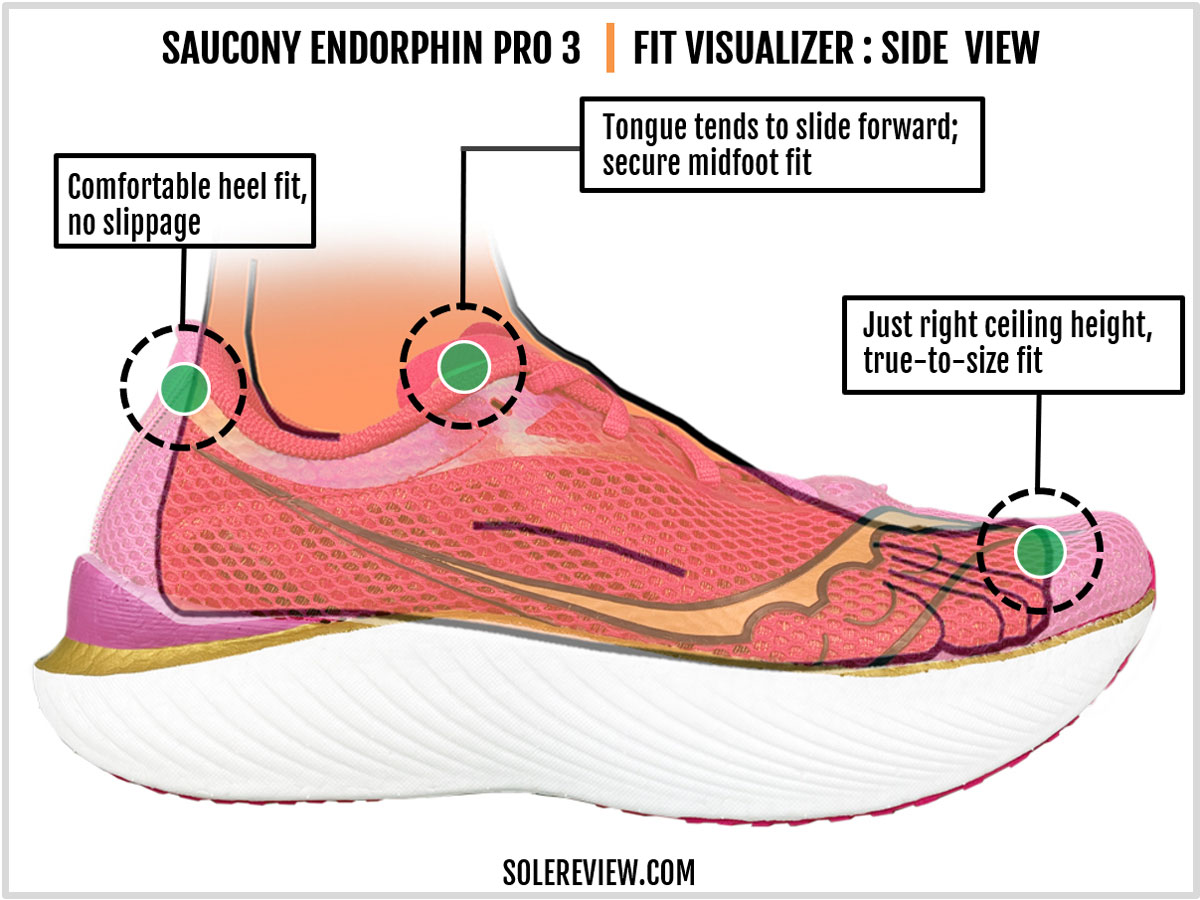
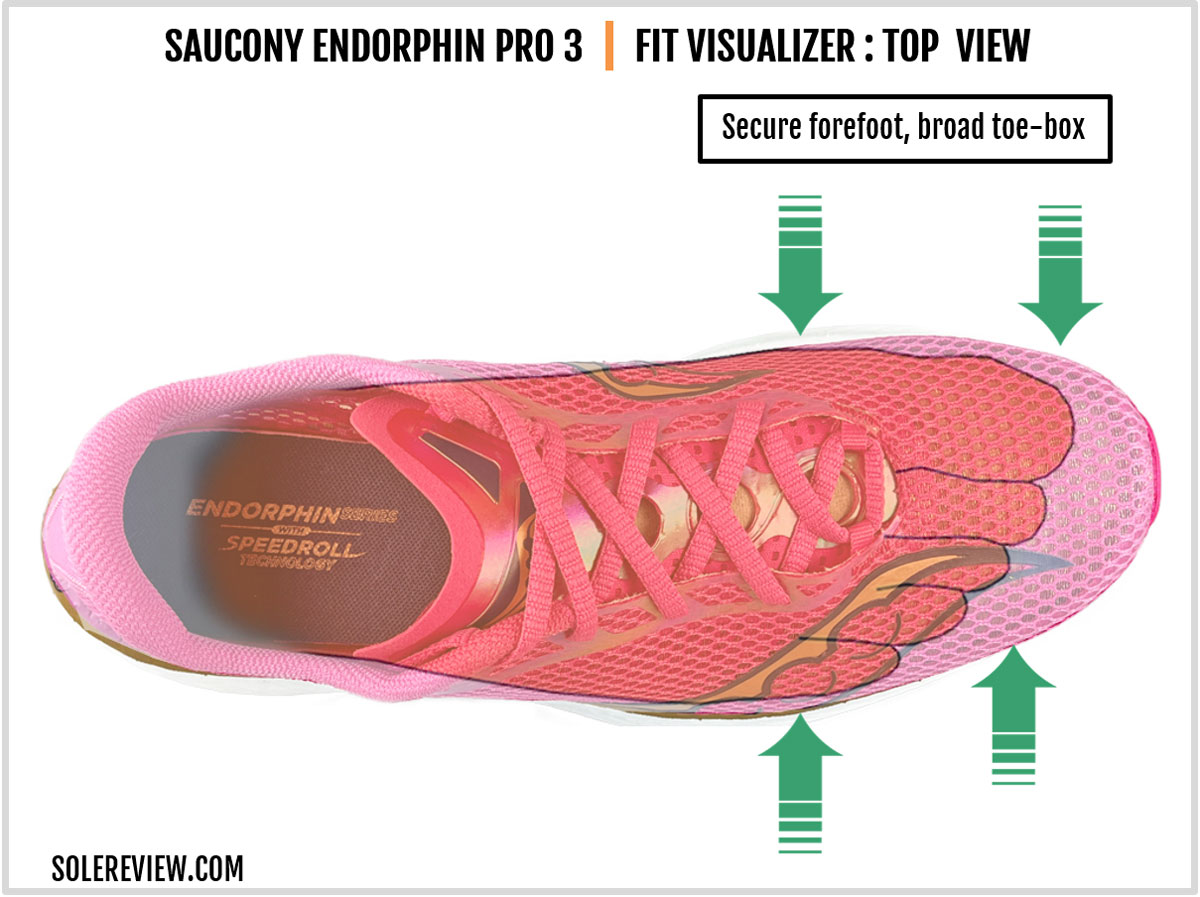
The Saucony Endorphin Pro 3 fits as a racer should.
The lightweight mesh exterior fits securely without unwanted hot spots. The foot feels supported from the forefoot to the heel, and the fit runs true to size.
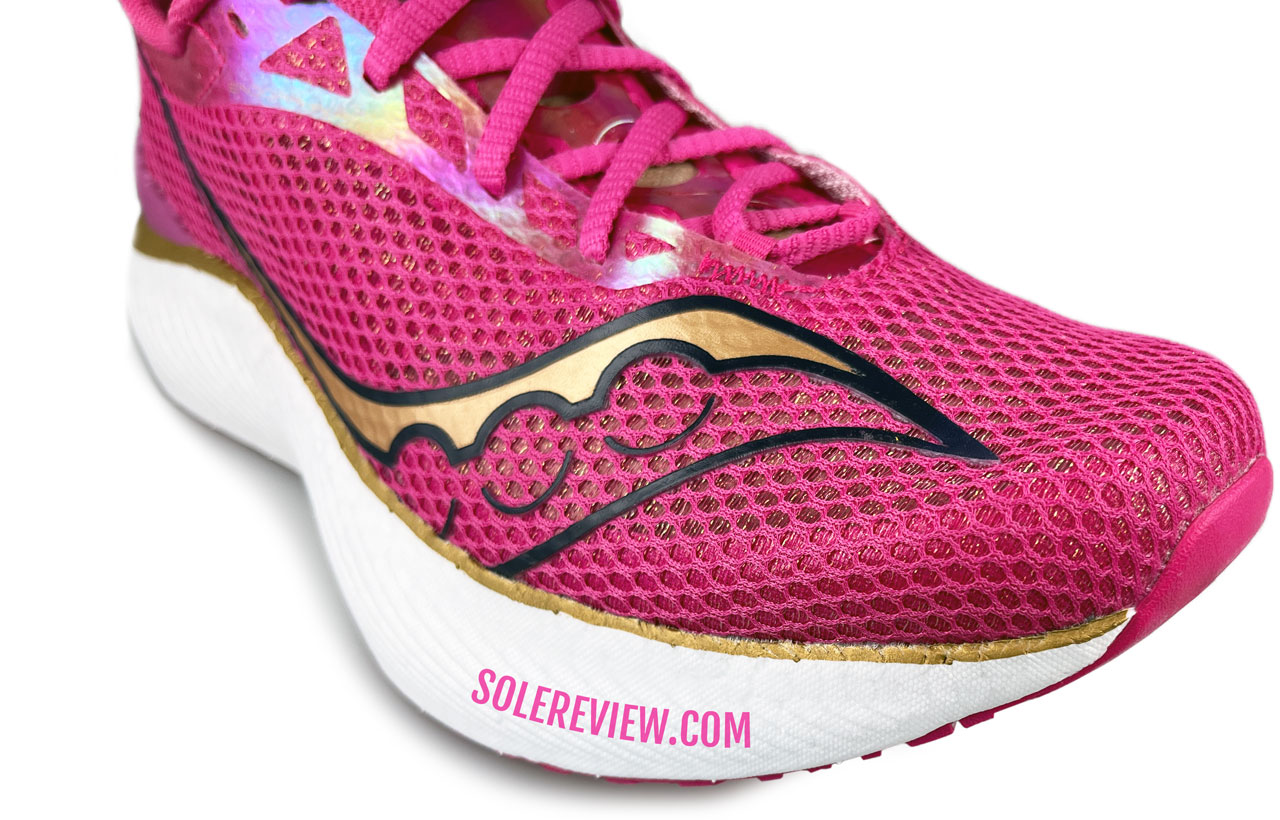
The secure fit includes a broad toe-box with a just-right ceiling height.
The toe-box and its soft internal bumper create ample room for the toes to splay. Achieving the right balance between toe-box space and fit security is often tricky, but shoes like the Saucony Endorphin Pro 3 and Speed 3 nail it.
Besides the broad toe-box profile, there’s ample clearance (ceiling) above the toes.
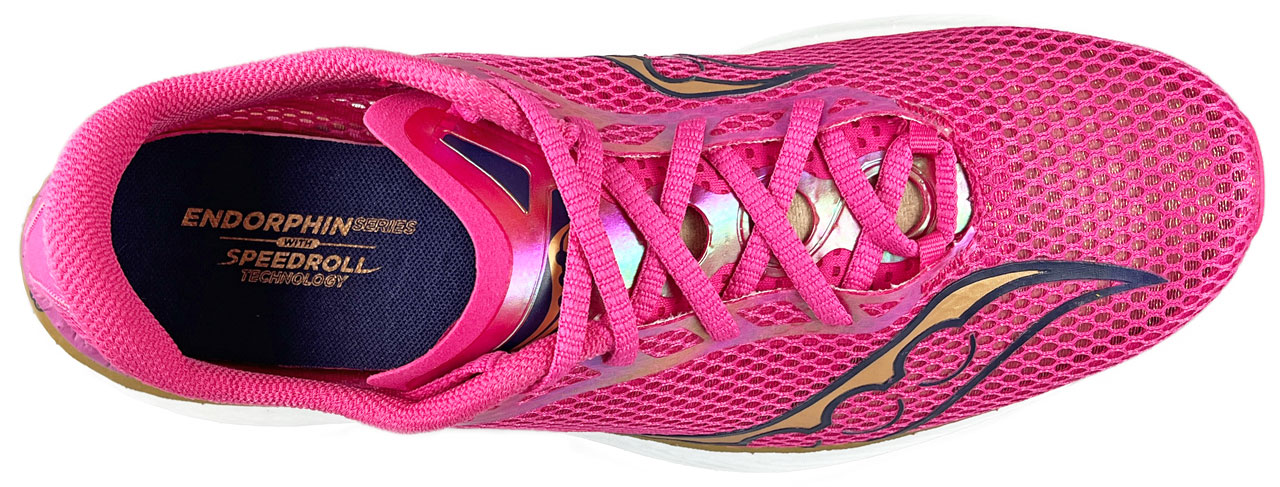
Note the tapered lacing that begins close together and then gradually grows wider. This means that the midfoot and forefoot will respond differently to lacing cinch.
This time, Saucony opts for a tapered lacing width, meaning that the separation between the opposing eyelets isn’t uniform. The eyelets are closely spaced on the first row, and then gets progressively increase the distance.
From a fit perspective, this reduces the risk of over-tightening the forefoot. On the other hand, cinching the wider part of the lacing will result in a snugger midfoot fit.
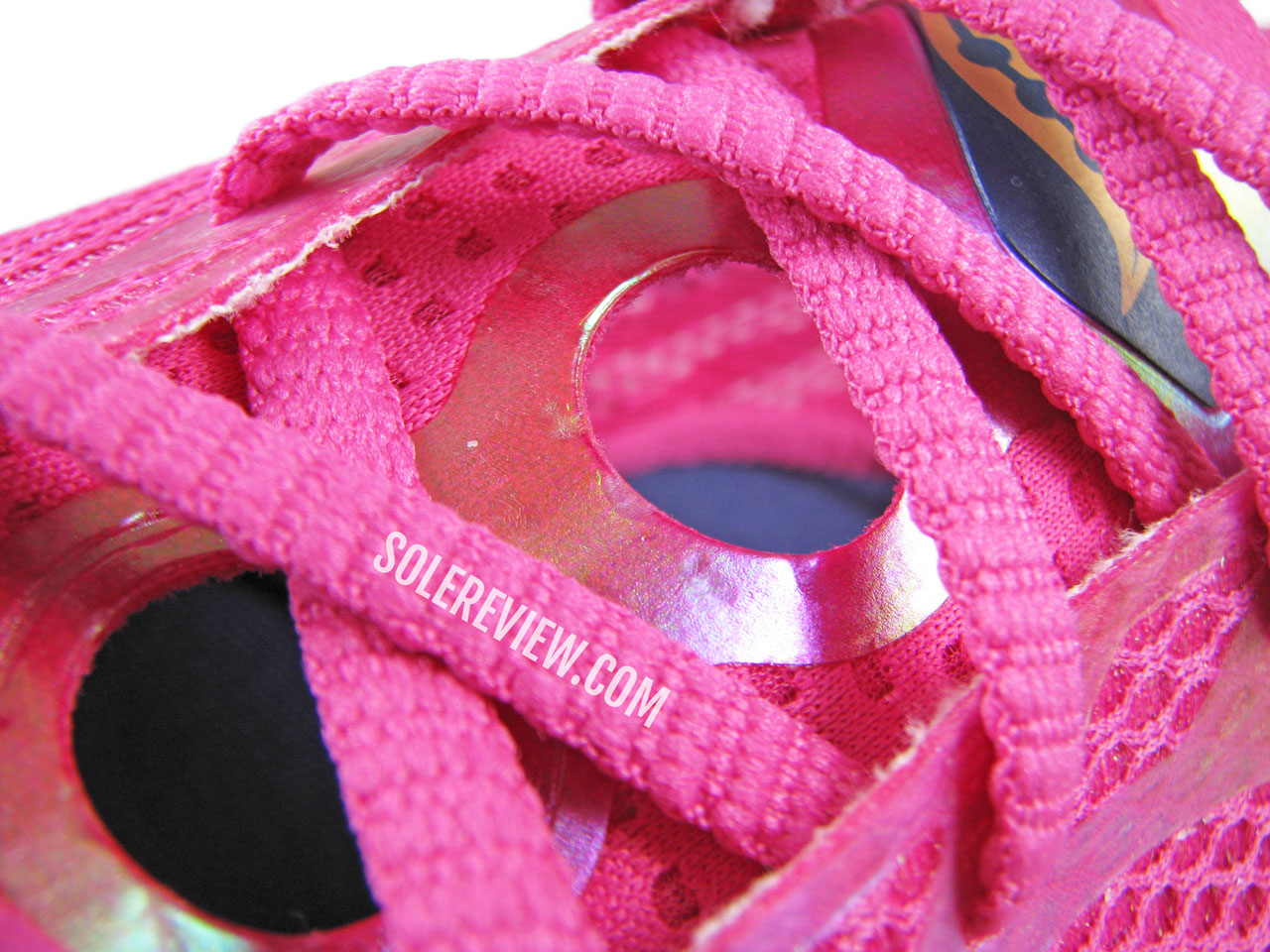
The Endorphin Pro 3’s upper is insanely breathable. The tongue has large vents punched over it, and the mesh is well-ventilated.
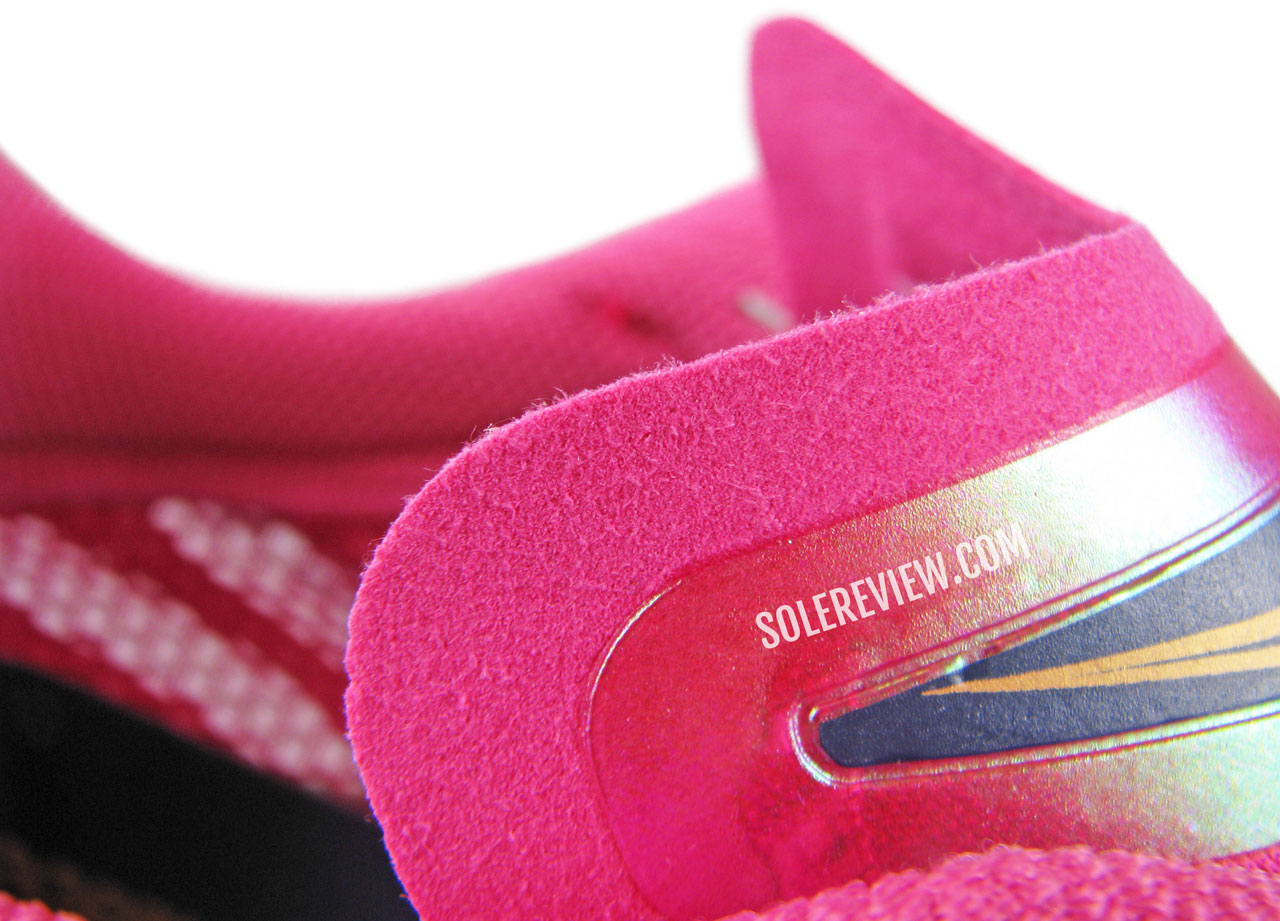
The flap edges are unfinished, but use a soft synthetic for comfort. The tongue could be wider, though.
The tongue is also unique; extra-large vents on the top keep the feet cool during runs. Since the tongue lacks padding, the top-down pressure is felt, but is never uncomfortable. The soft material of the tongue flap is comfortable over the instep.
Having said that, the tongue design isn’t perfect. The large circular holes on the top mean that there’s not enough mesh area in contact with the foot and laces.
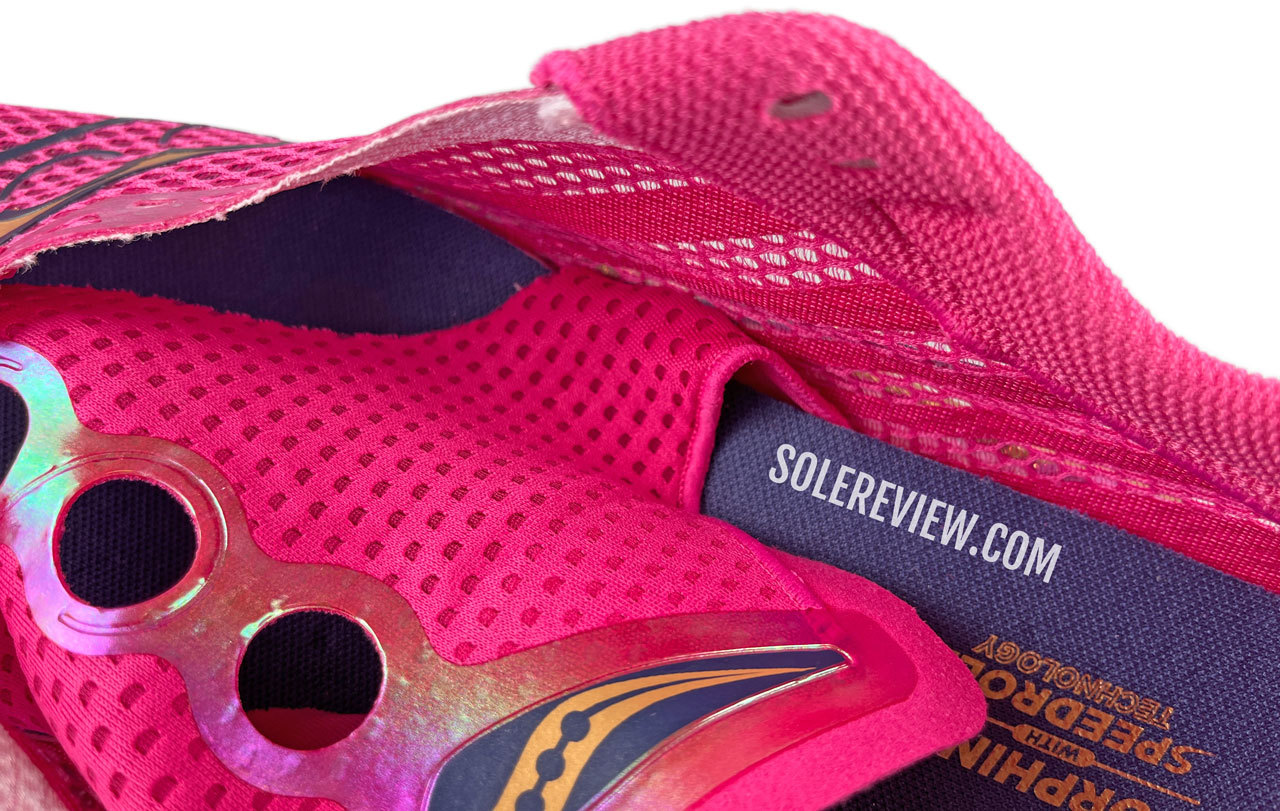
Despite a gusset, the tongue experiences a mild forward (not sideways!) slide.
In other words, the tongue doesn’t grip the foot well, and tends to slide forward. Since the tongue is attached to a gusset, the slide is limited, but it happens.
The tongue should also be longer. The heel locks in well without needing to deploy the runner’s loop. But if you did, the tongue length falls short.
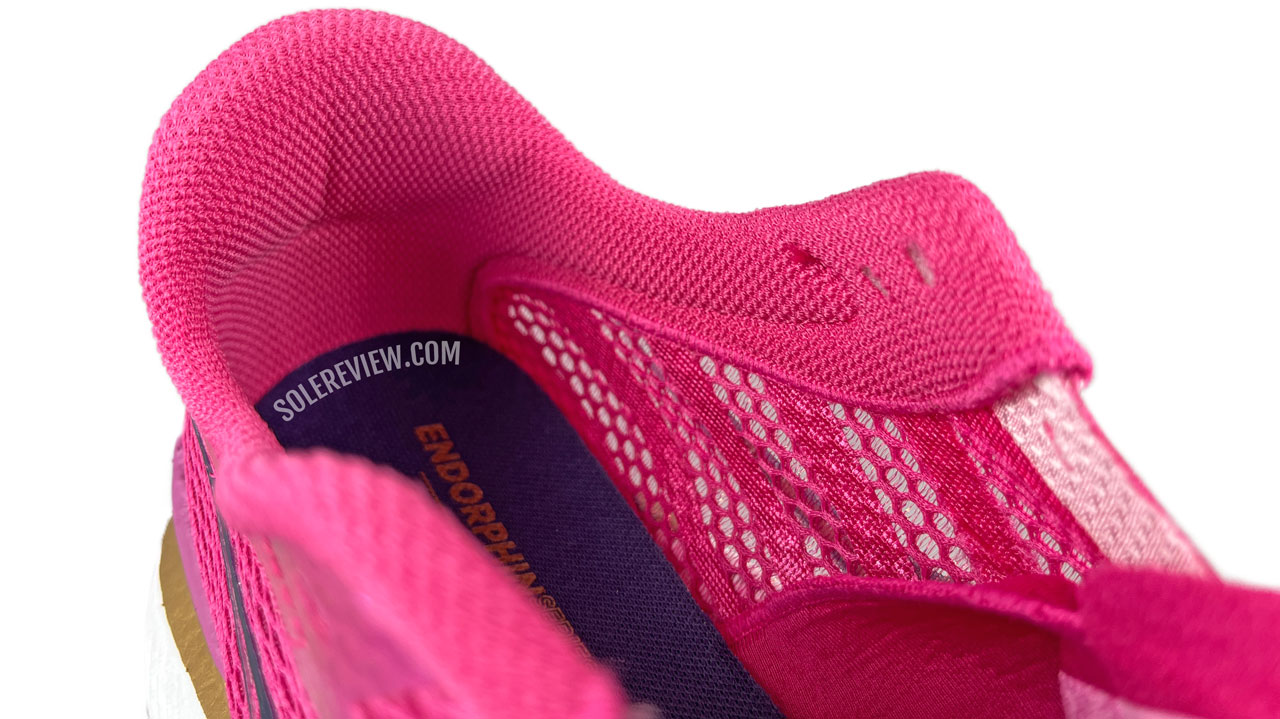
The heel lock-down is excellent, without needing to resort to a runner’s loop.
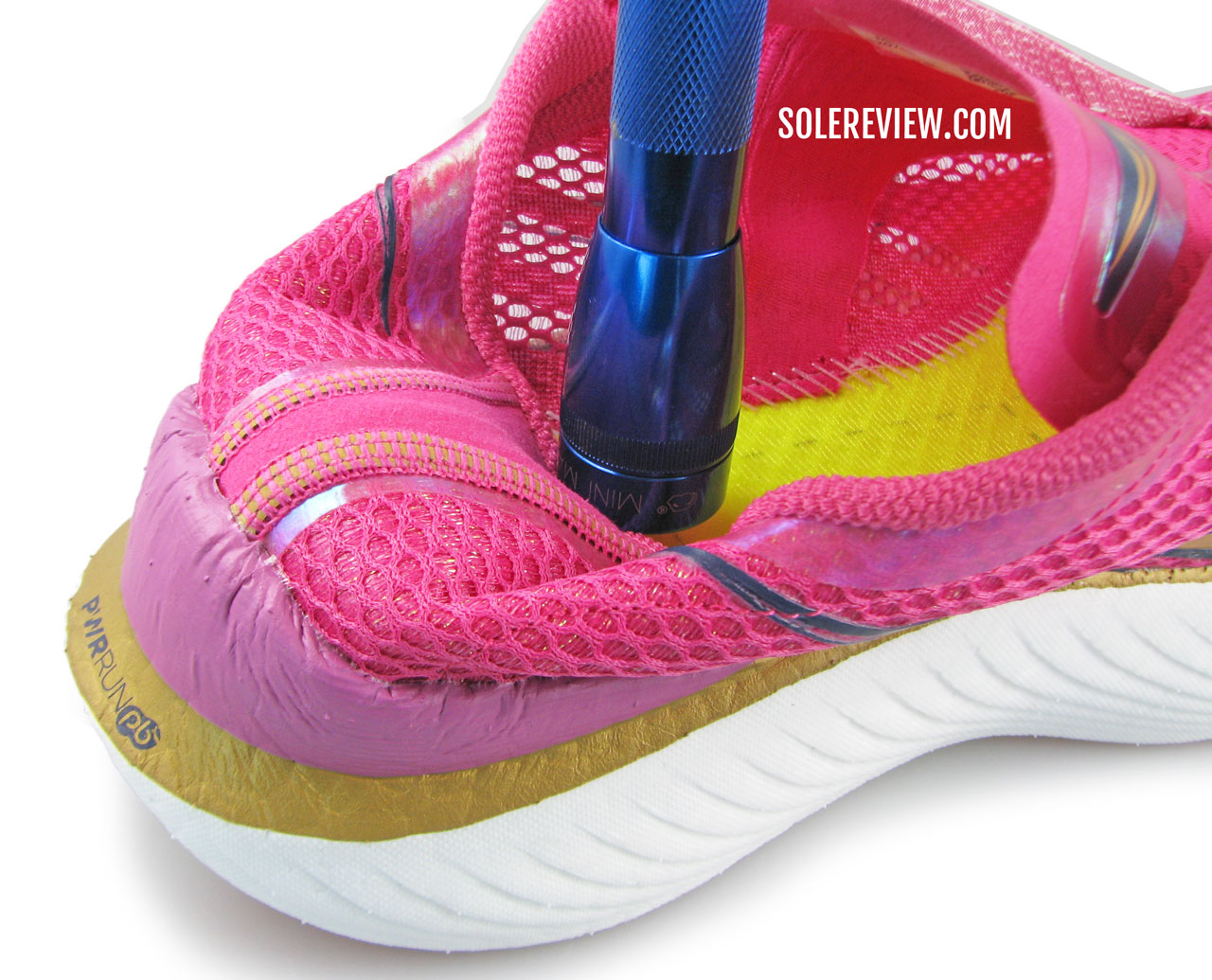
Unlike the Speed 3, the Pro 3’s heel lacks a stiff counter. This design greatly minimizes the chances of Achilles irritation.
Like the previous version, the upper heel lacks a stiff counter. And if low light visibility matters to you, just know that the Saucony Pro 3 doesn’t have large reflective bits like the Speed 3 does. The thin strips on the heel are reflective, but they’re nowhere as effective as the Speed 3.
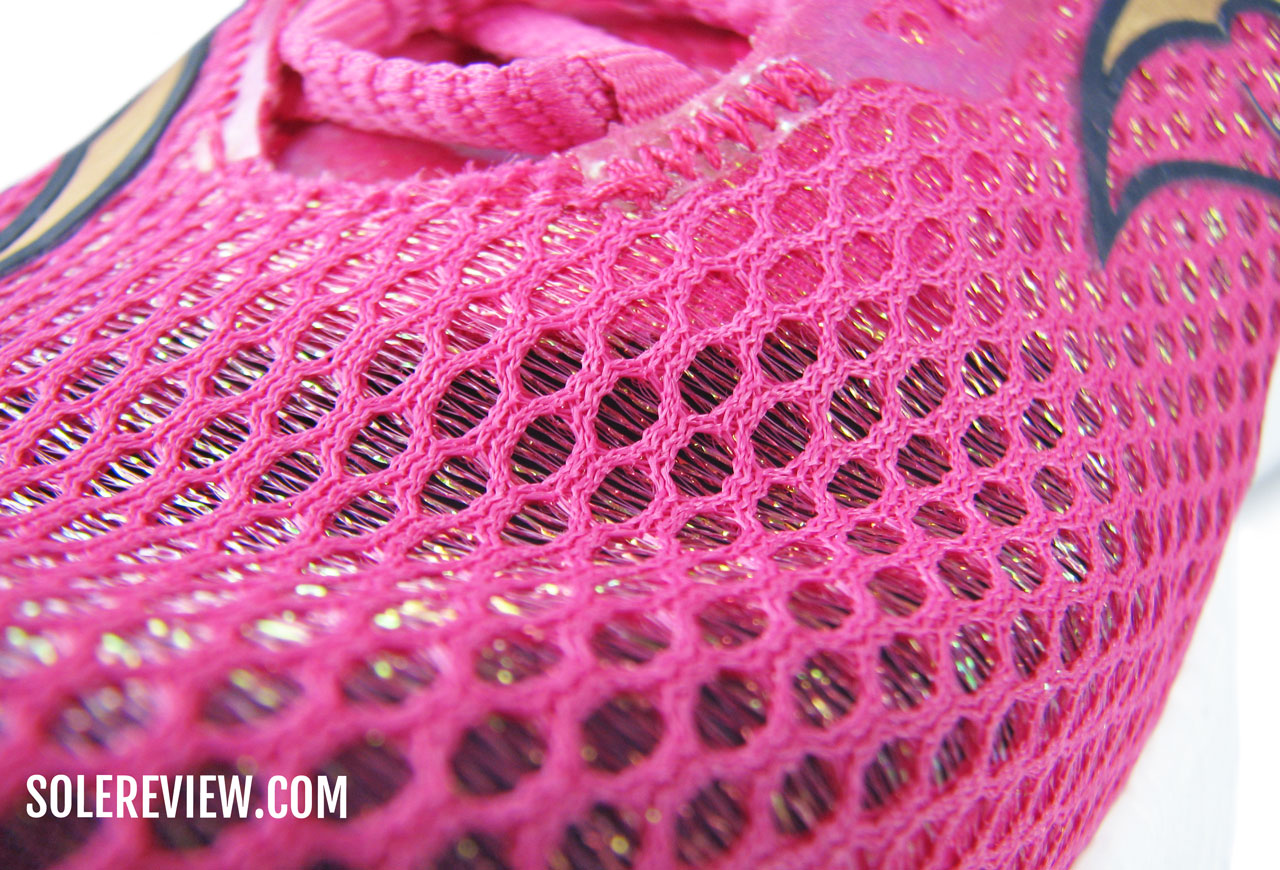
The thin mesh excels at keeping the feet cool.
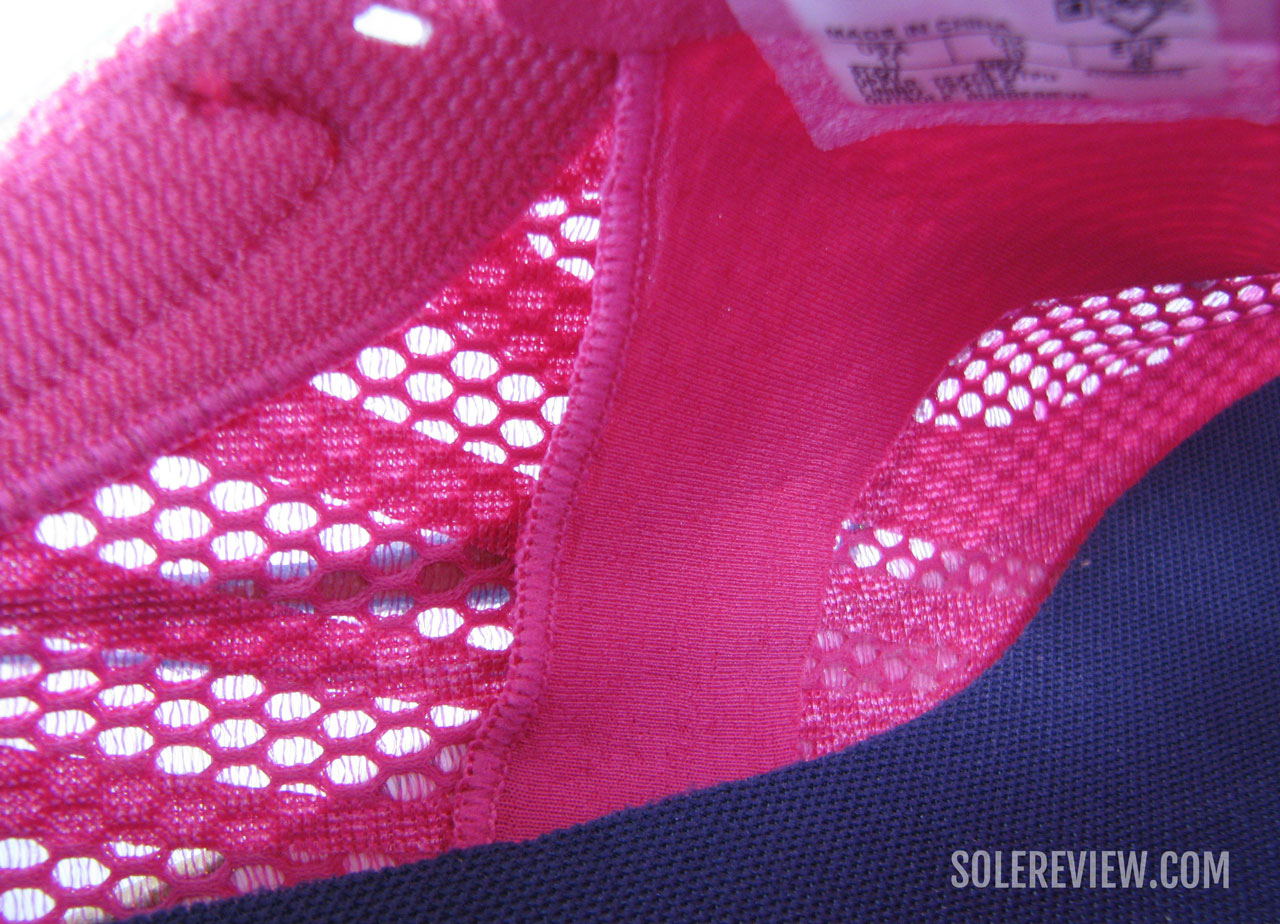
The use of lightweight mesh materials and linings helps with air circulation.
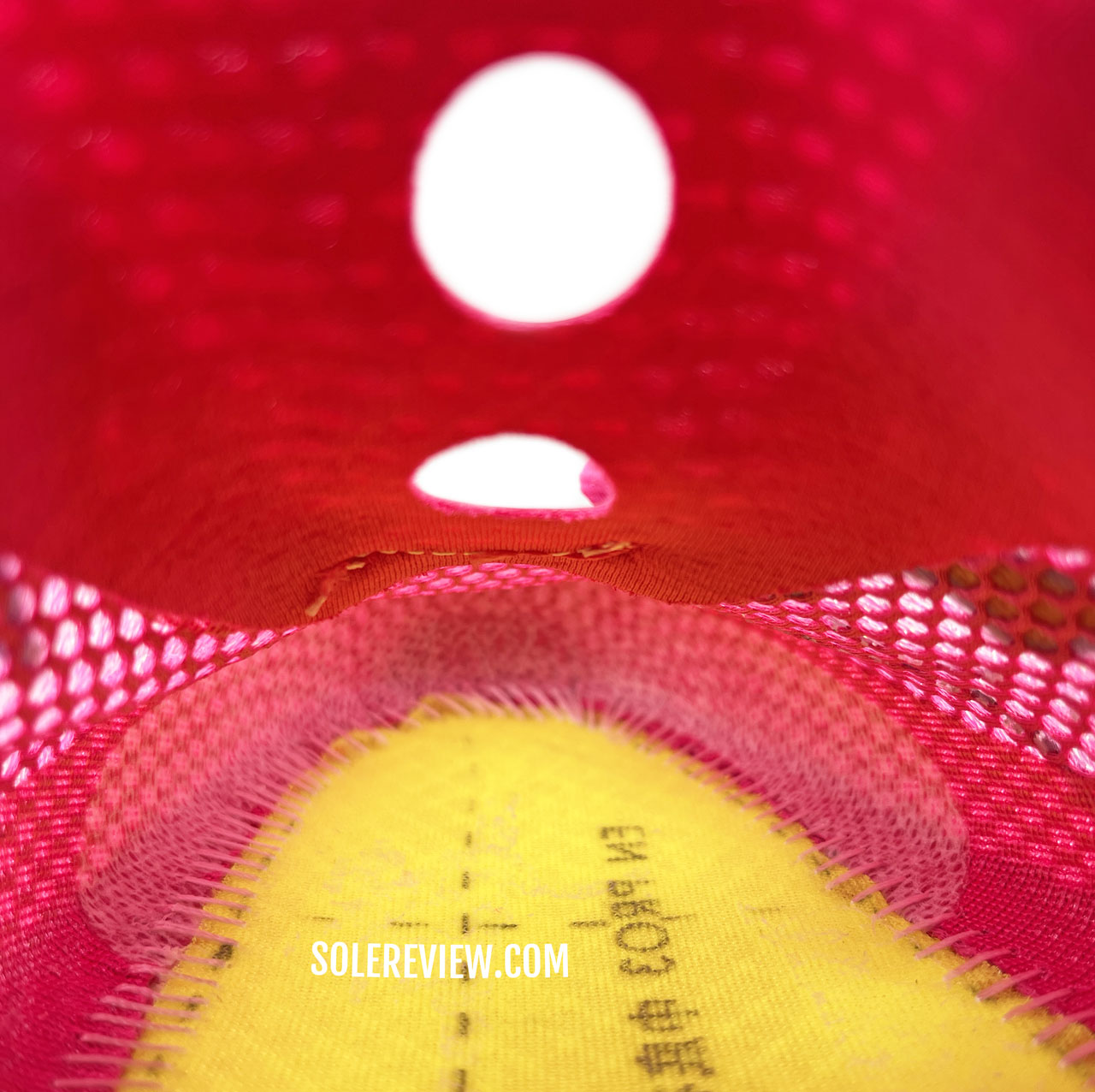
The large tongue vents of the Endorphin Pro 3 take ventilation to the max.
The ventilation is excellent. The exterior has an iridescent sheen, and most of it comes from the thin yarns that allow the air to circulate. The tongue design isn’t perfect, but it’s hard to fault the ventilation – the large holes do what they’re supposed to.
PROS AND CONS
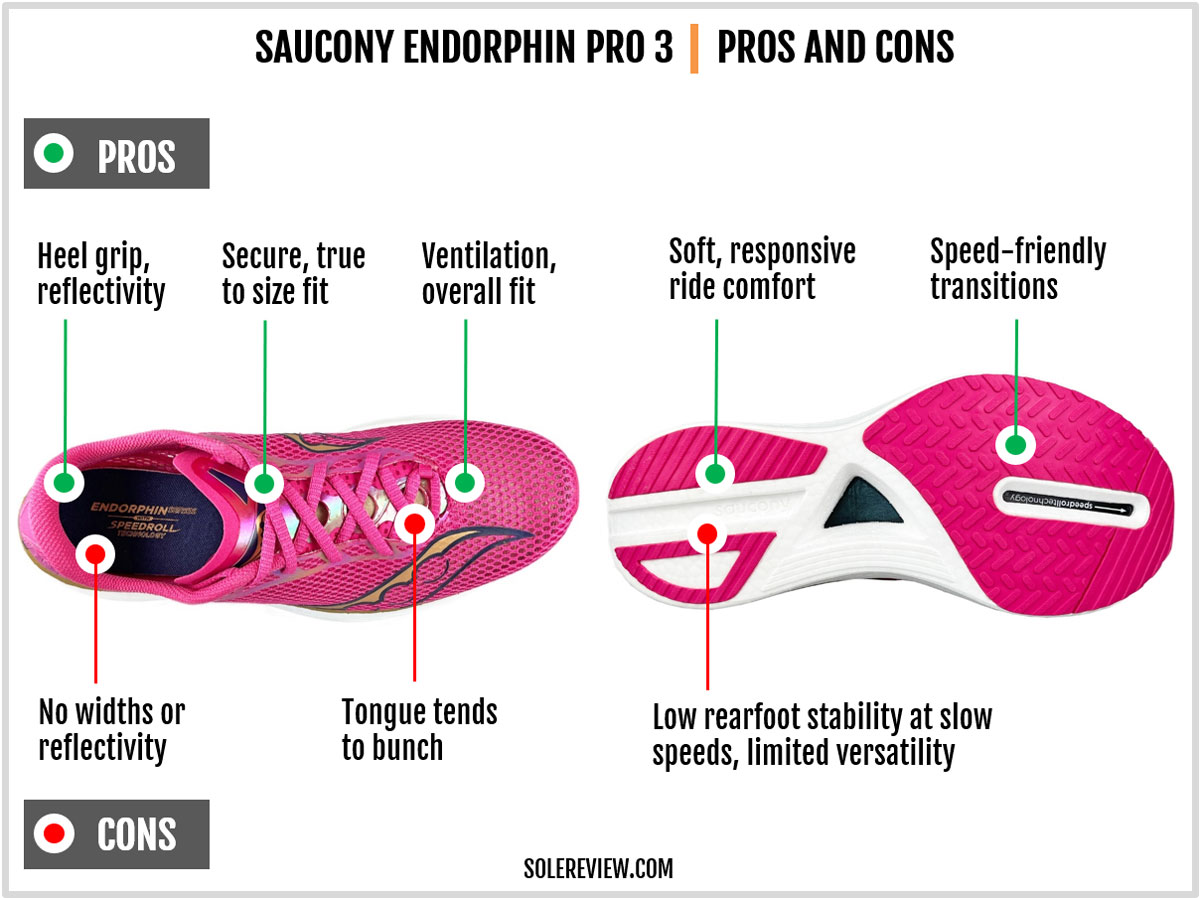
The higher stack heights and softer ride turn the lightweight Endorphin Pro 3 into an improved version of its past self.
The Carbon plate, bouncy PEBA foam, and E-TPU midsole make this shoe ideal for long-distance training and races. The responsive Pwrrun PB foam makes high-mileage races less grueling, whereas the plate adds a speed-friendly character.
Above the midsole is a breathable upper that fits securely and true to size.
However, there are certain use cases where the Endorphin Pro 3 doesn’t perform very well. For instance, rearfoot striking at speeds slower than 5 min/km (8 min/mile) accentuates the low levels of rearfoot stability. Therefore, the Pro 3 is not exactly versatile – it serves a specific purpose, and it does that well.
You’re also limited to the single width that Saucony offers for the Pro 3, and the bare-minimum reflectivity does not compare to that of the Speed 3.
Lastly, the Saucony Pro 3 had a strong industrial stink that took nearly a week to dissipate. It’s an acrid smell – perhaps glue or dye – that even transfers to the socks.
SHOES SIMILAR TO THE SAUCONY ENDORPHIN PRO 3
The running shoe market may be saturated with plated running shoes, but Saucony Endorphin Pro 3 has very few equals. After all, not all running shoes with a Carbon plate behave identically.
Here, we’re talking about running shoes that combine a soft PEBA foam (or equivalent) with a full-length plate that offers both the rearfoot snap and forward roll.
After applying those criteria, only a few remain. The Saucony Endorphin Speed 3 is similar, except for its firmer and more stable ride.
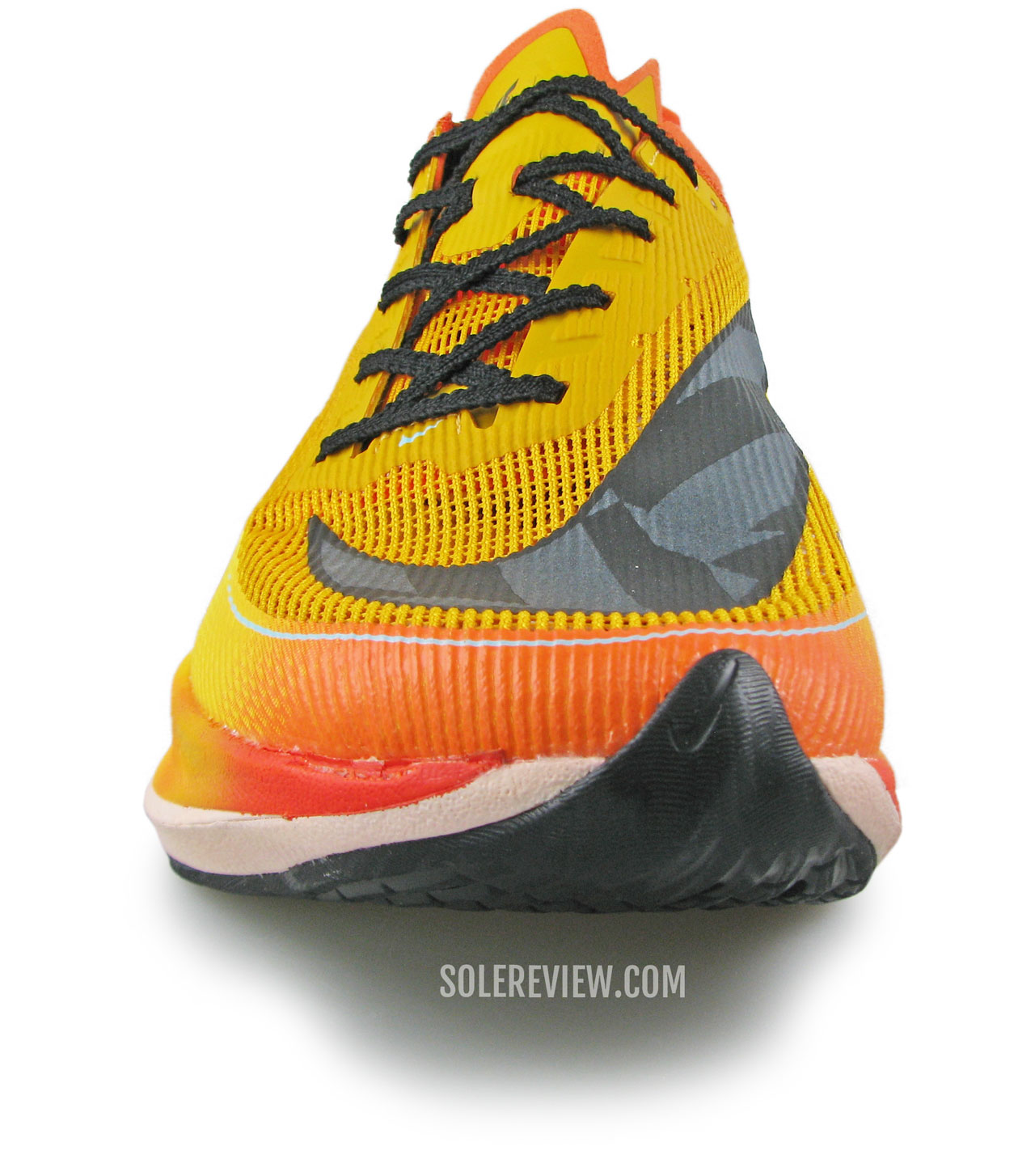
The Nike Vaporfly Next% V2 is currently the closest alternative. In our detailed review, we took a closer look at how the ZoomX midsole and Carbon plate established the industry standard for cushioned marathon racers.
The Asics Metaspeed Sky and Metaspeed Edge are noteworthy mentions, and we’re also anticipating the New Balance SC Elite V3 that’s due to be released soon.
Do you own this shoe? Improve this review by sharing your insights – submit a review here.


